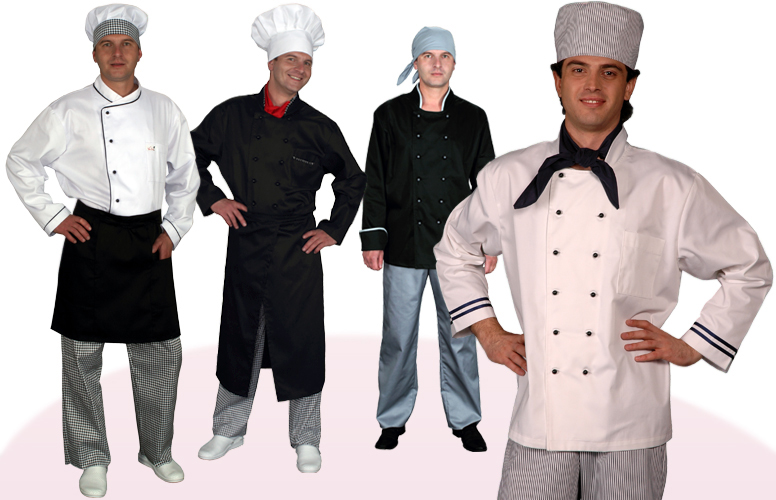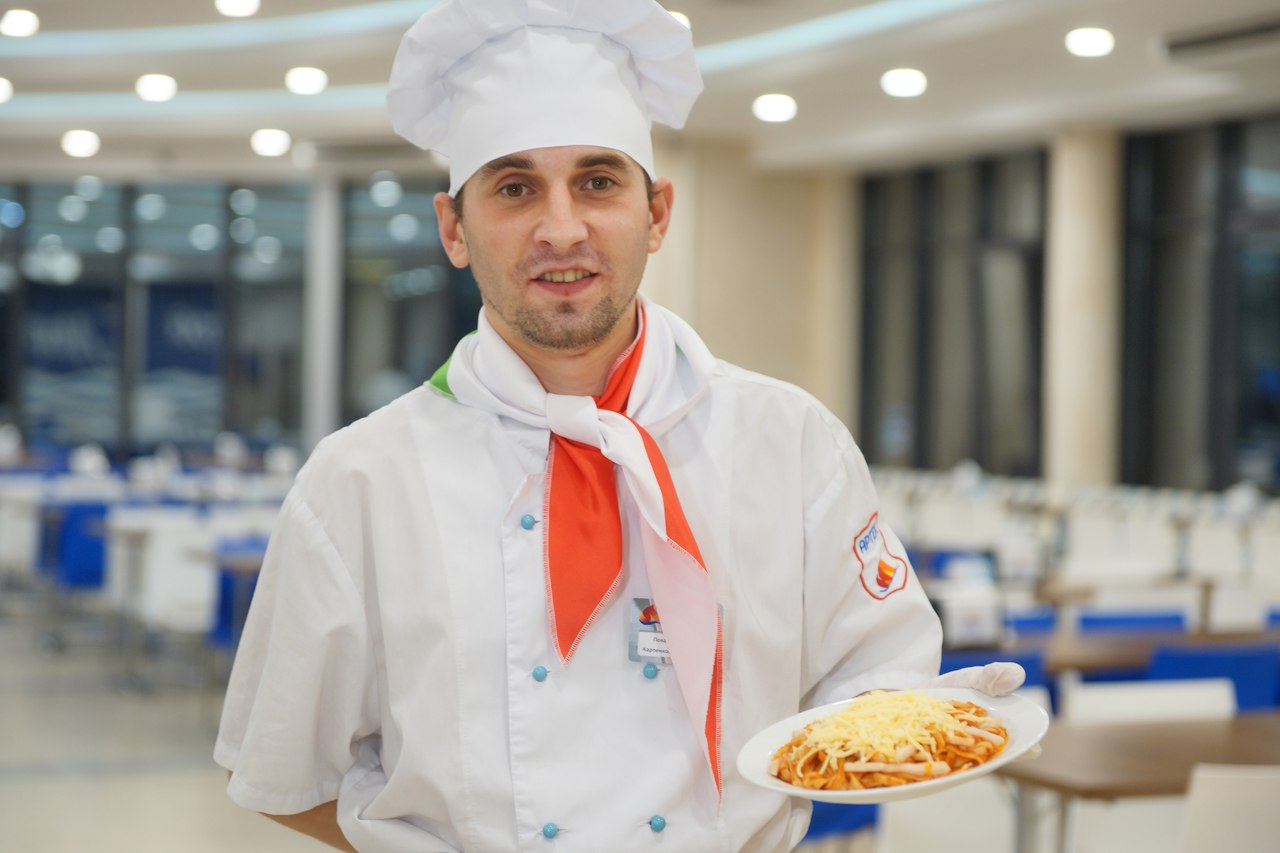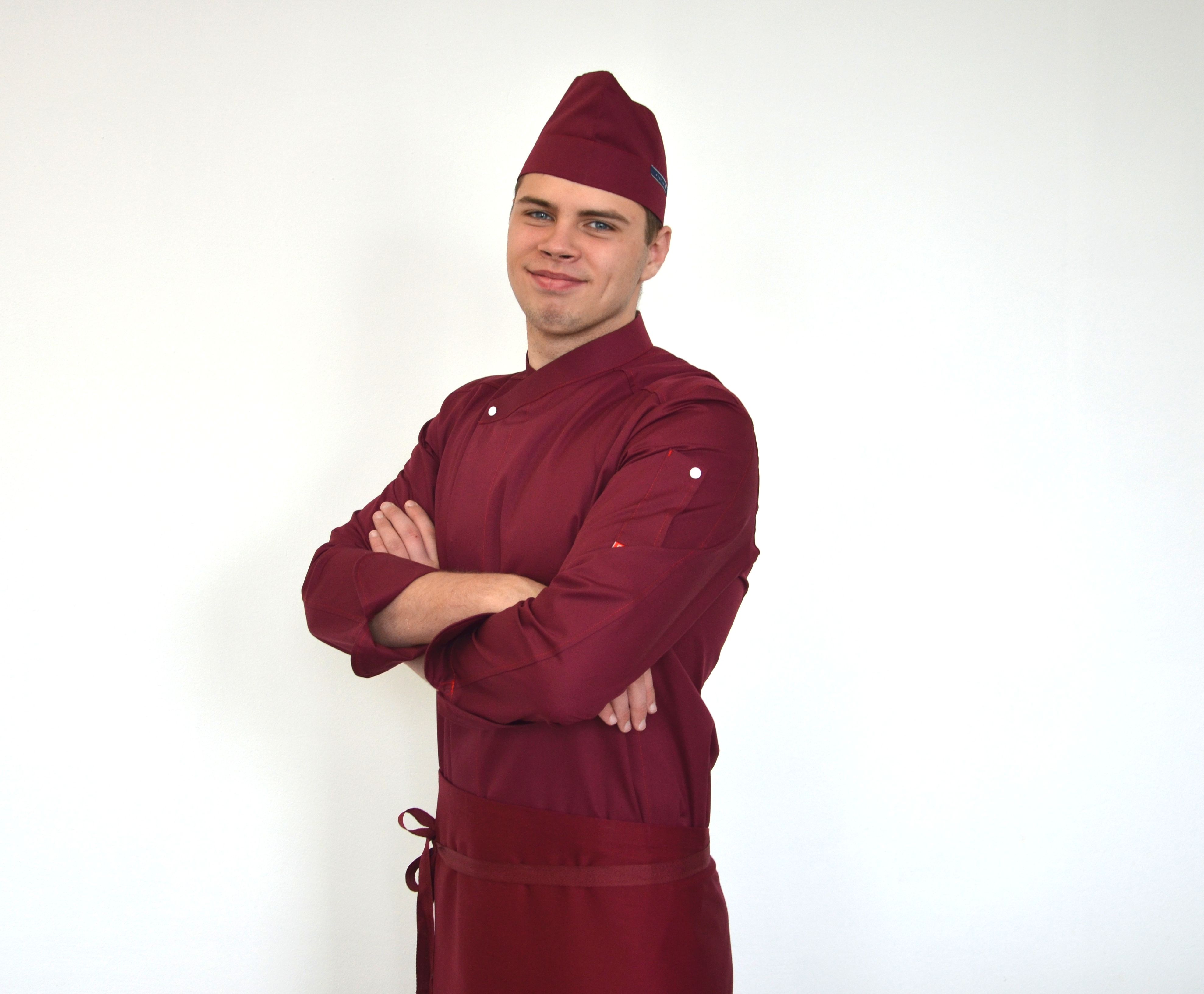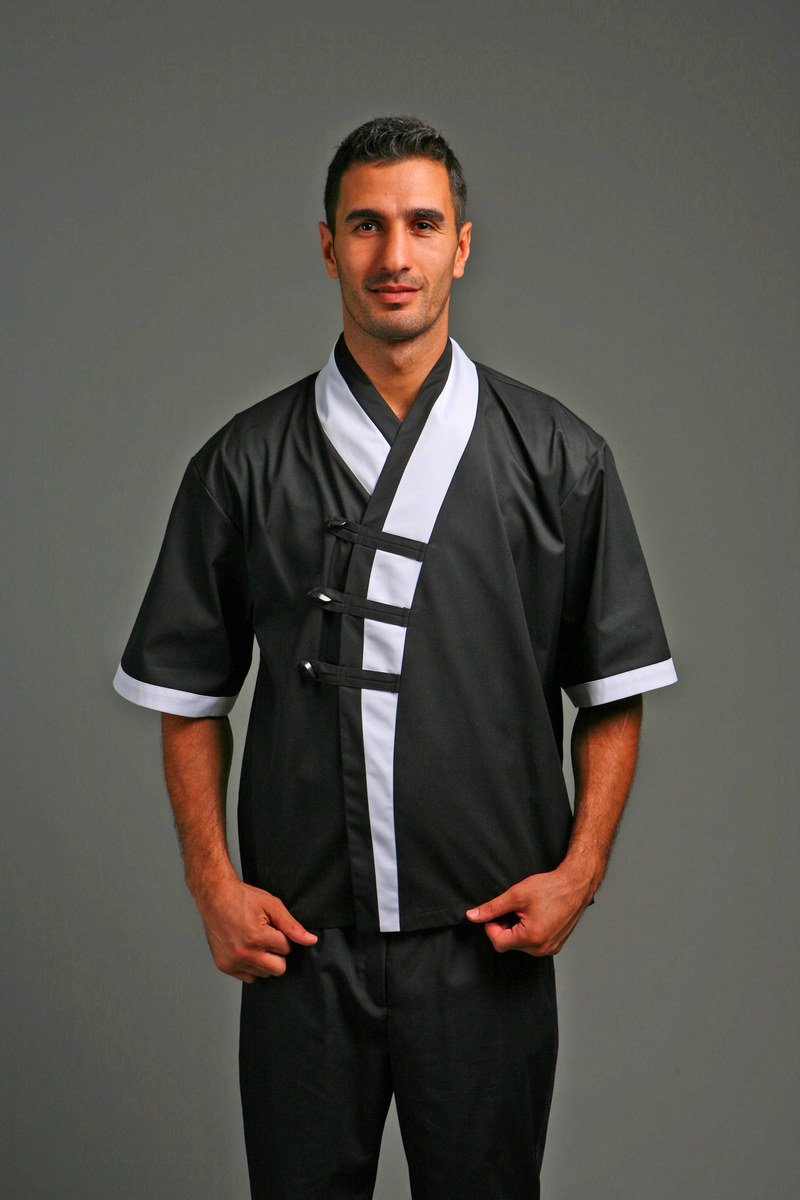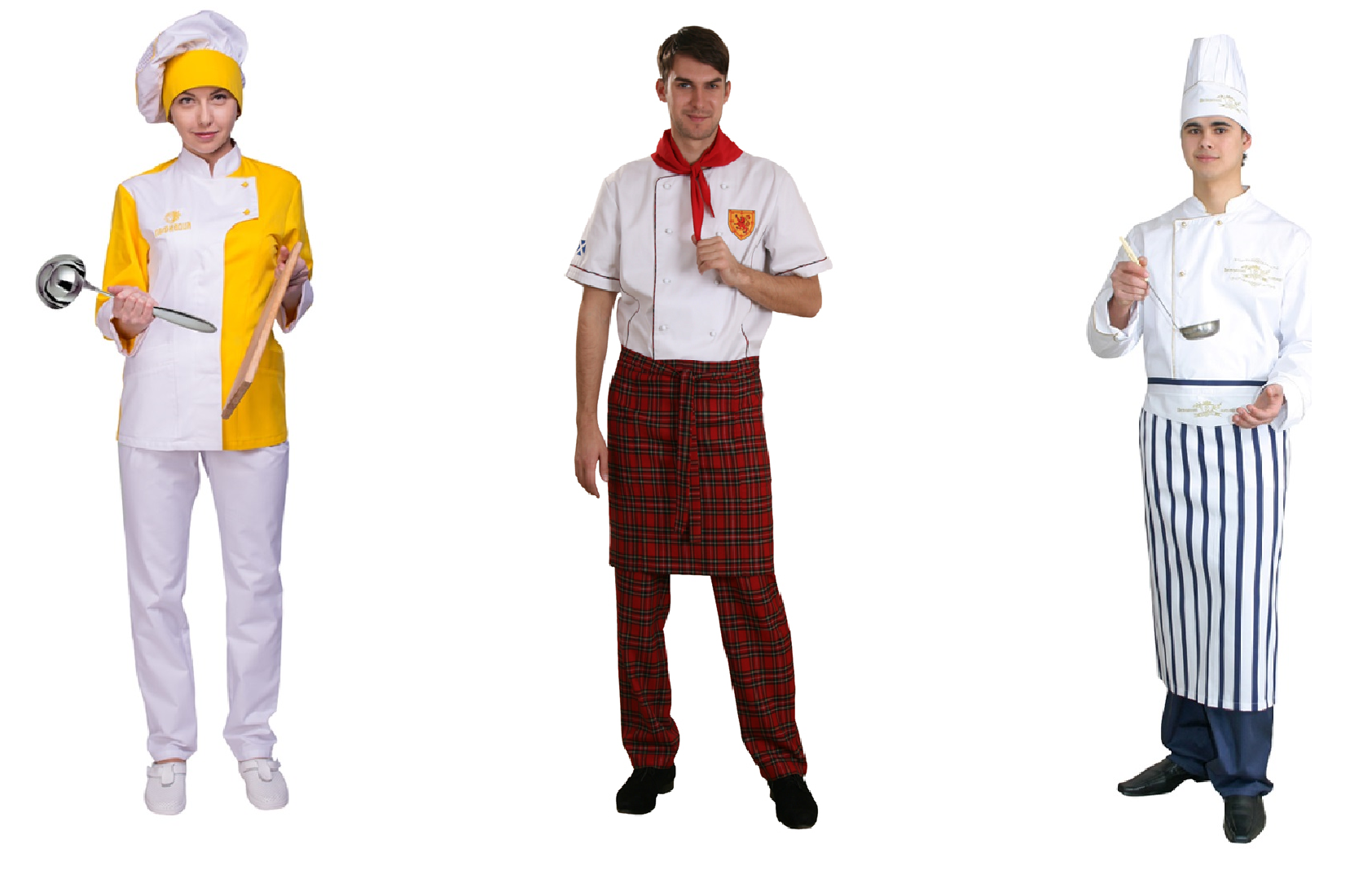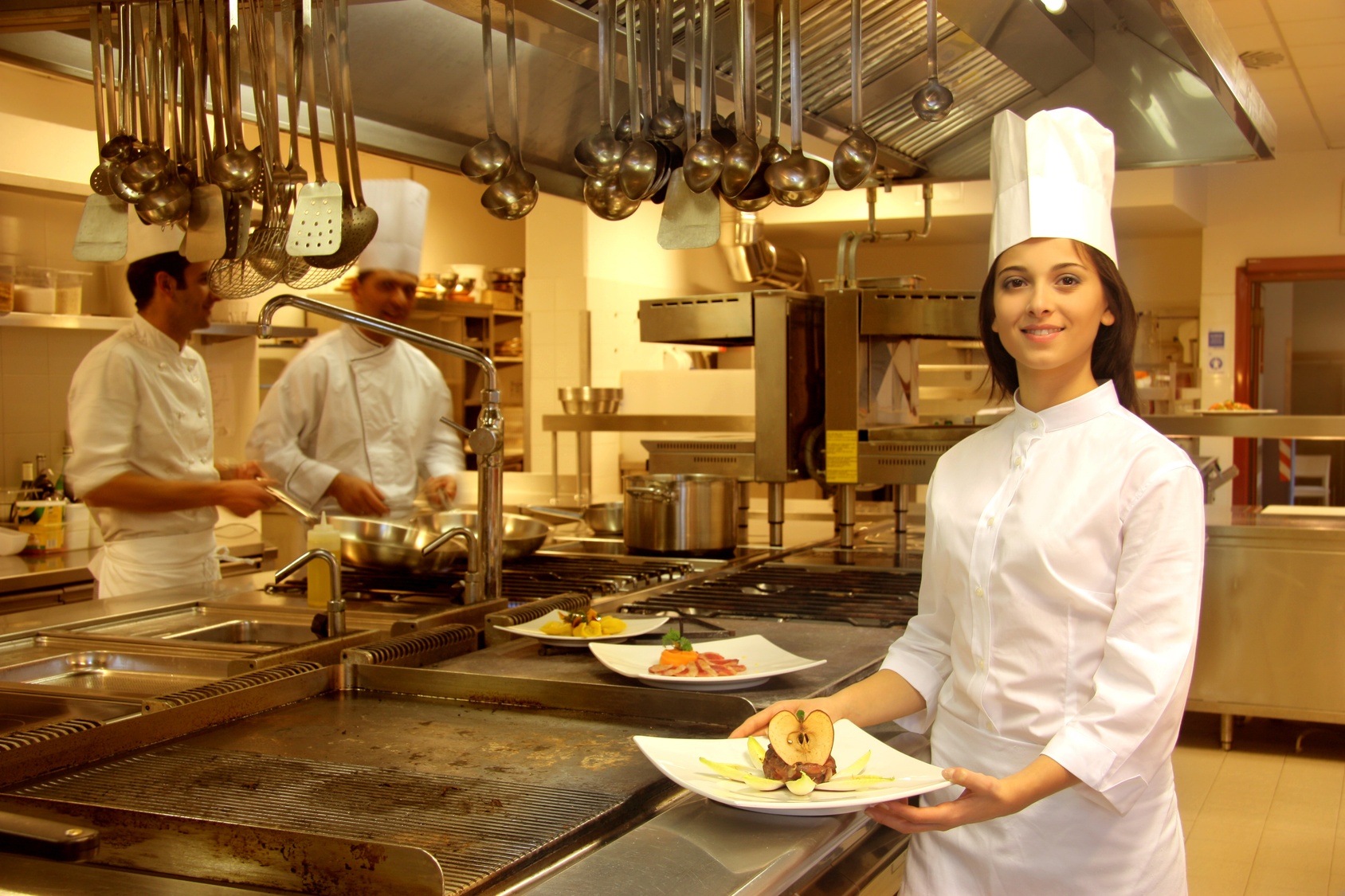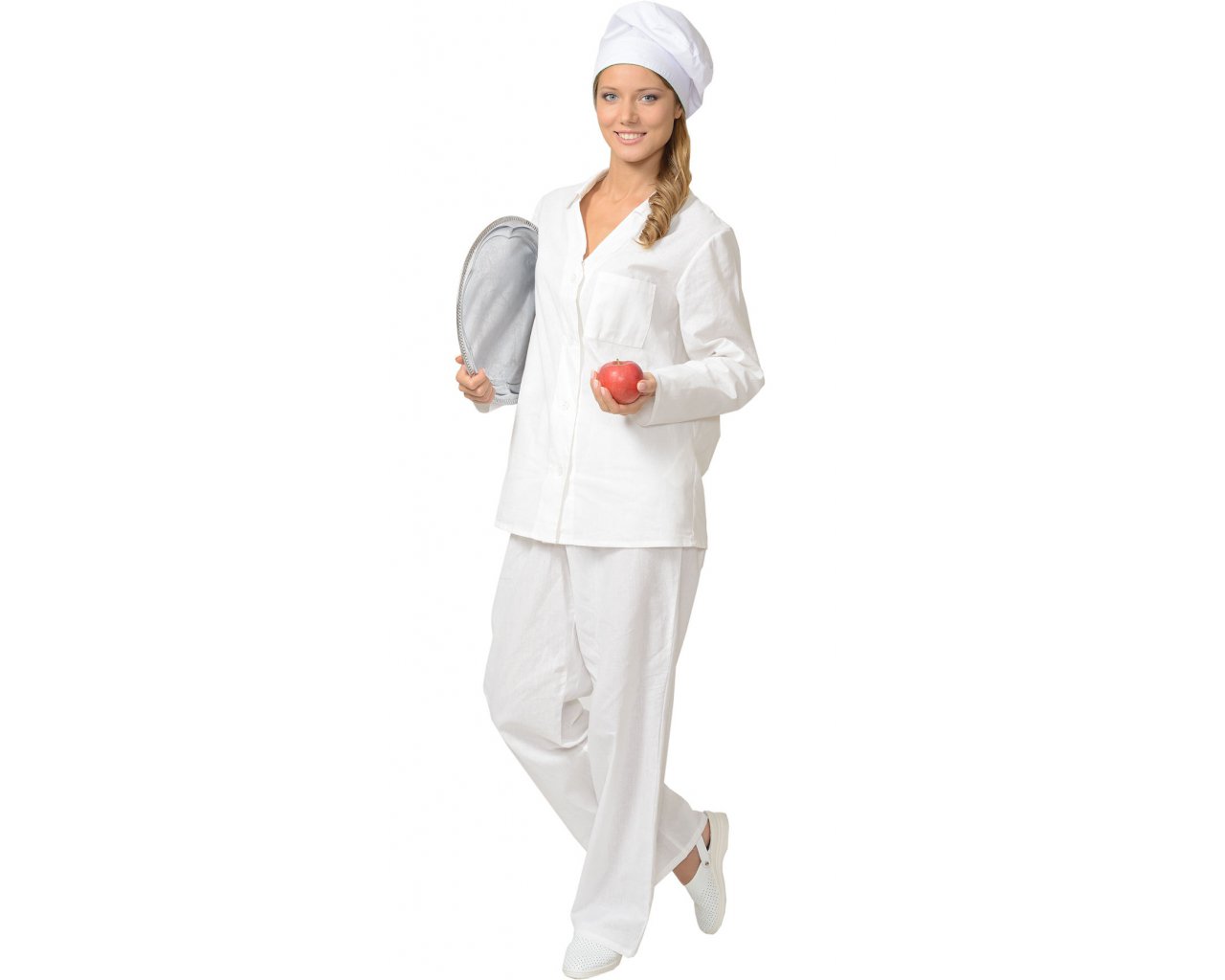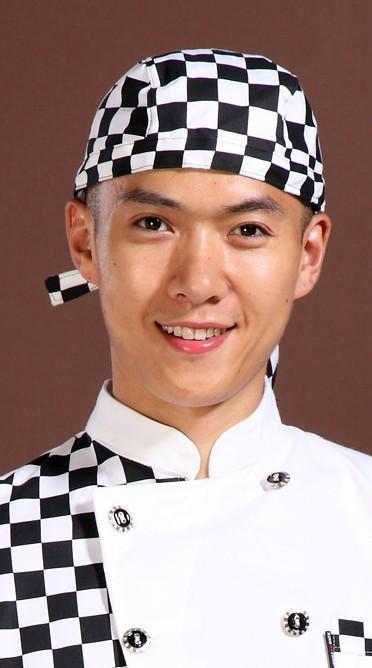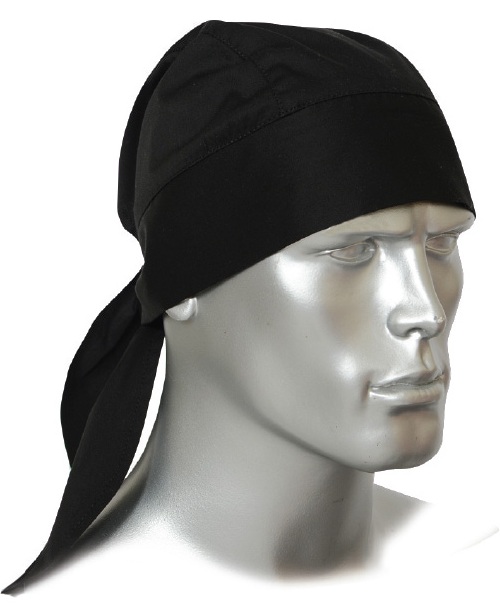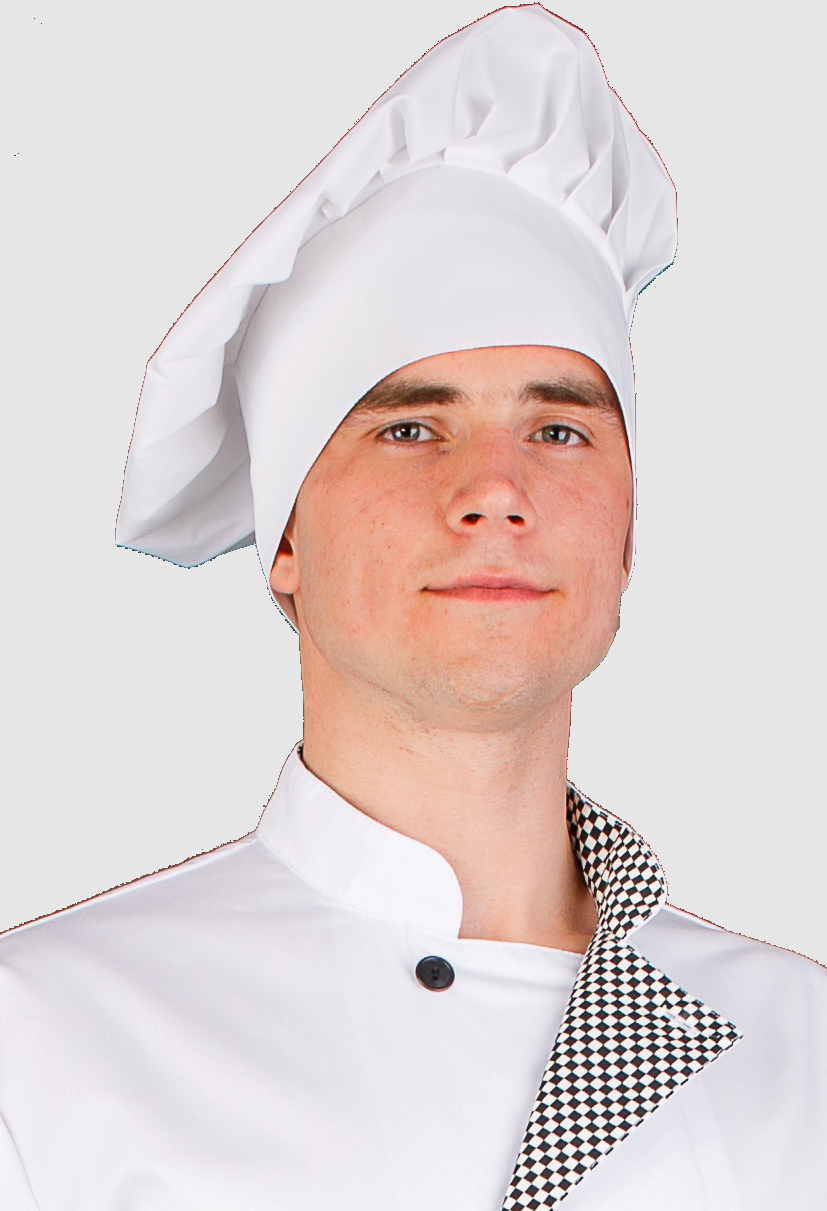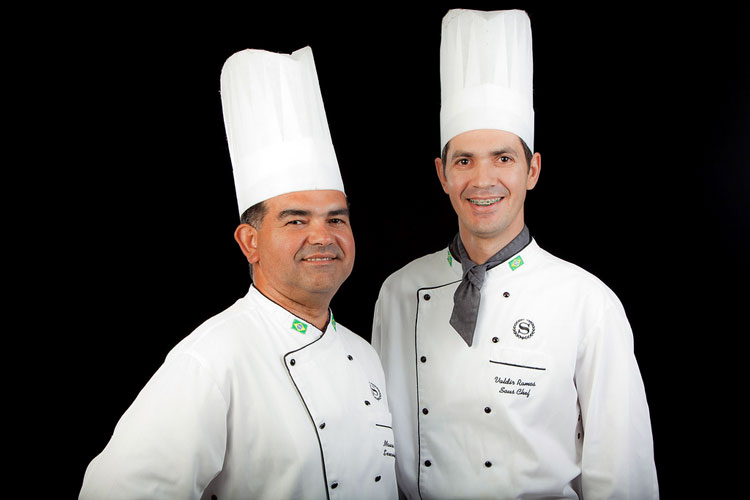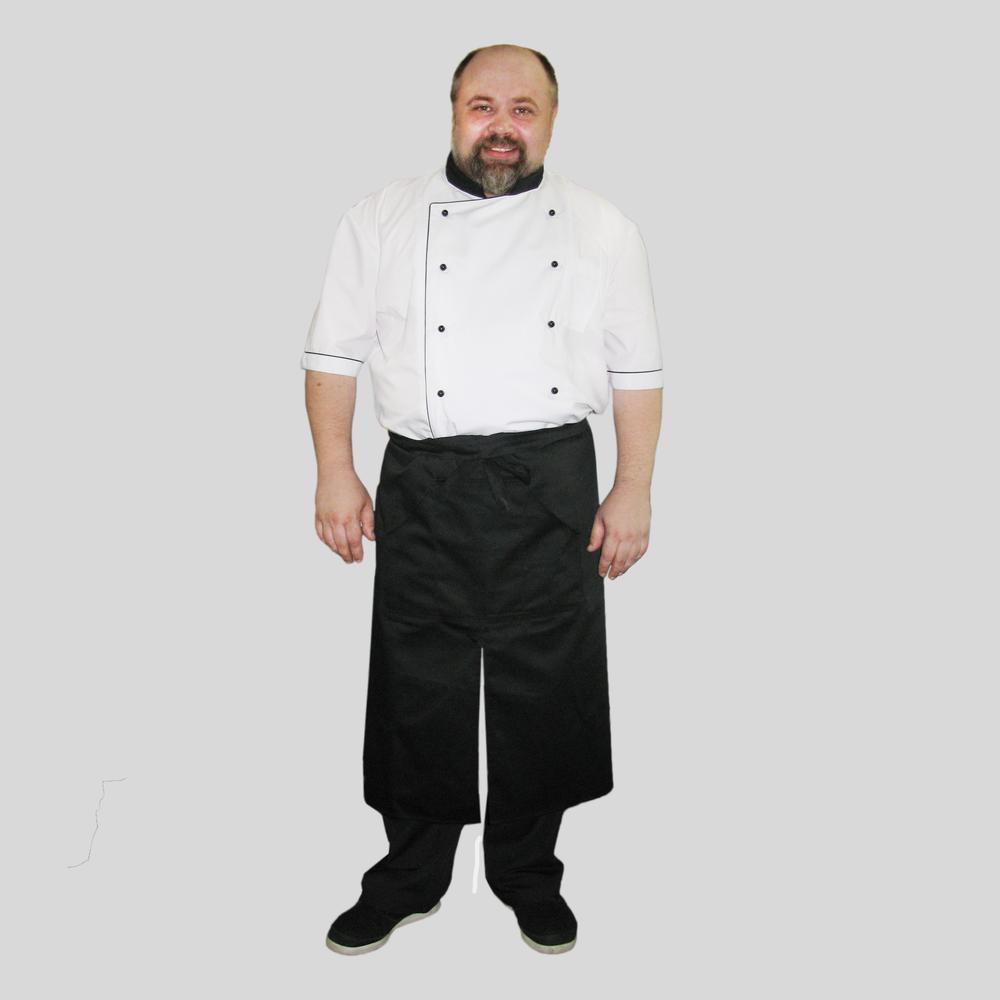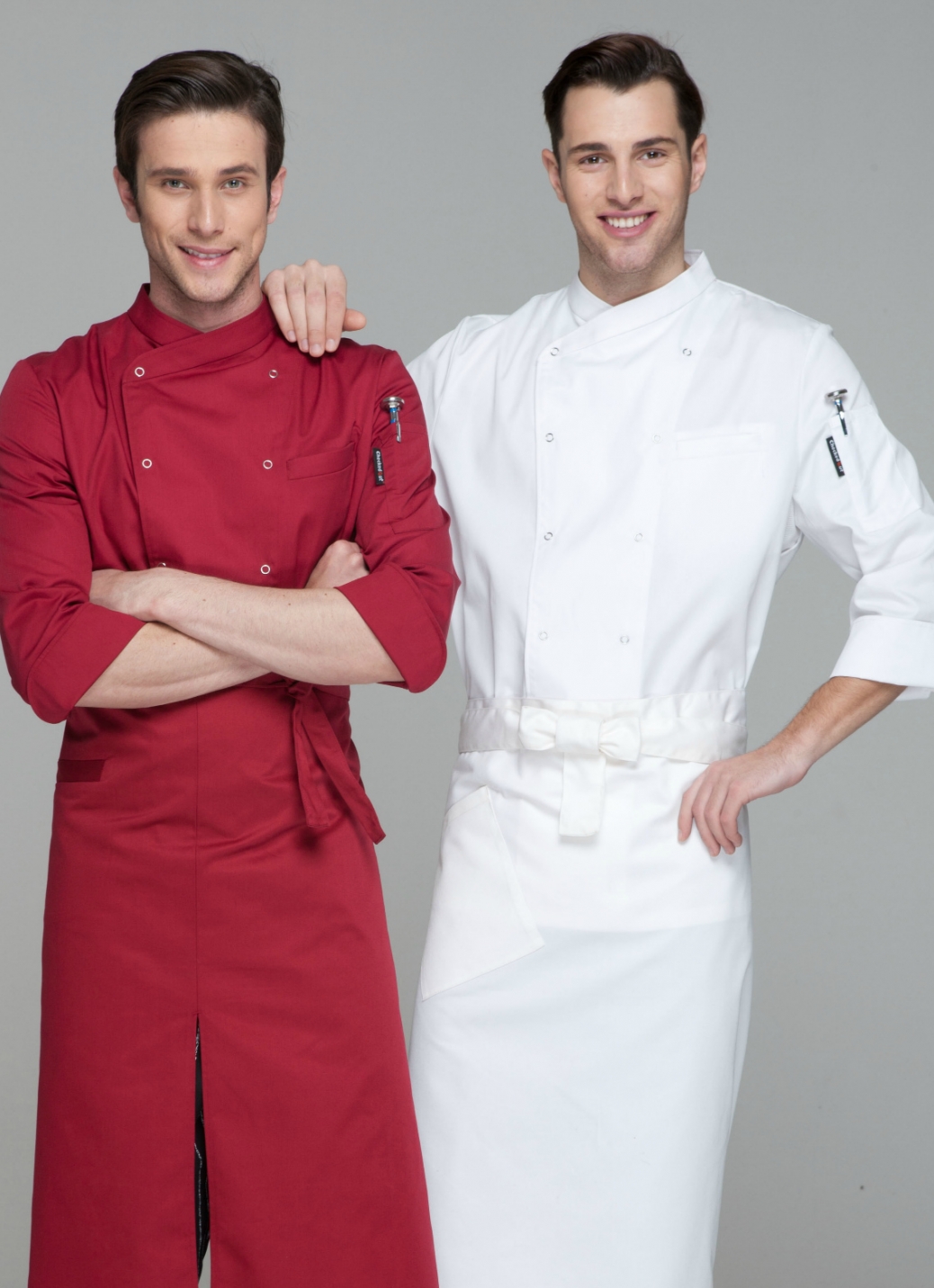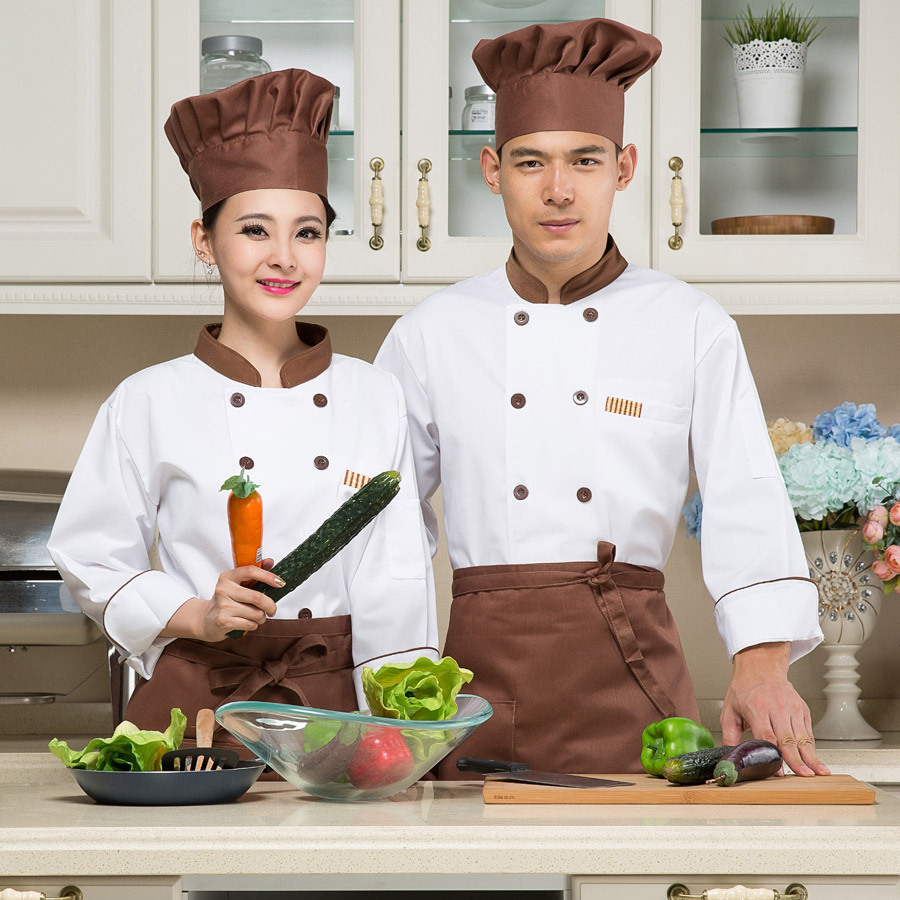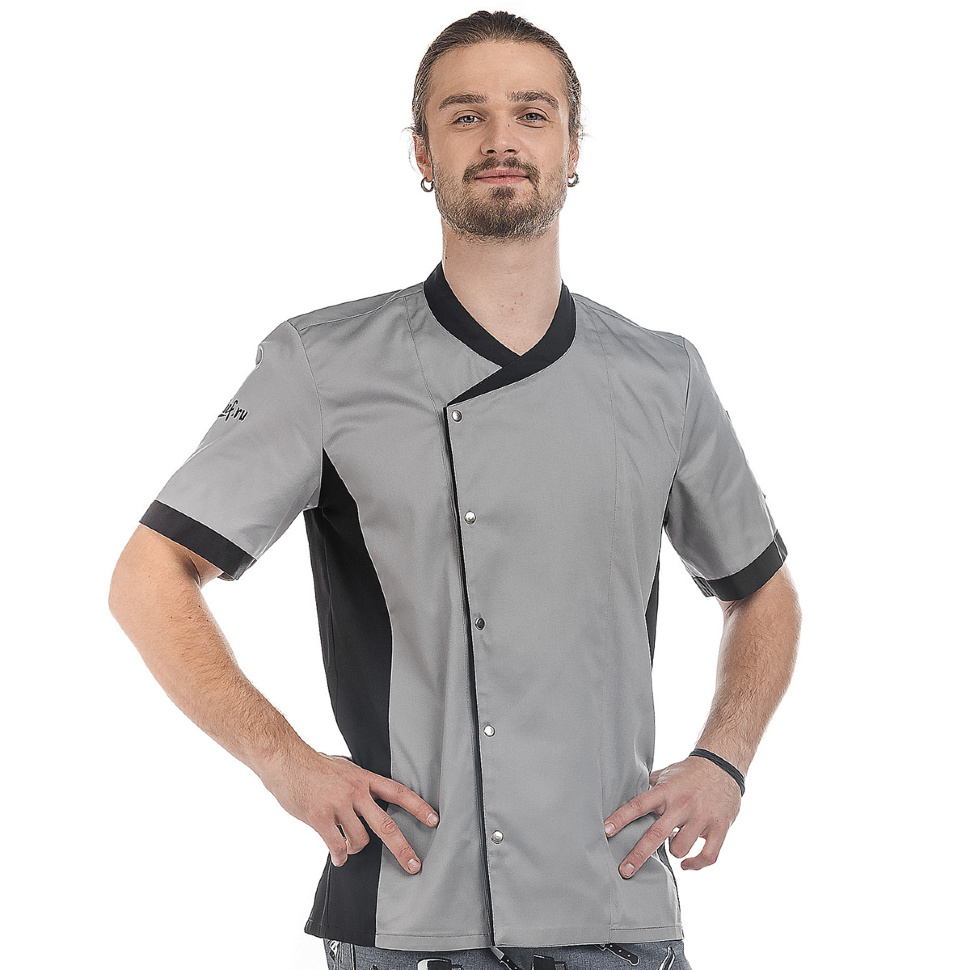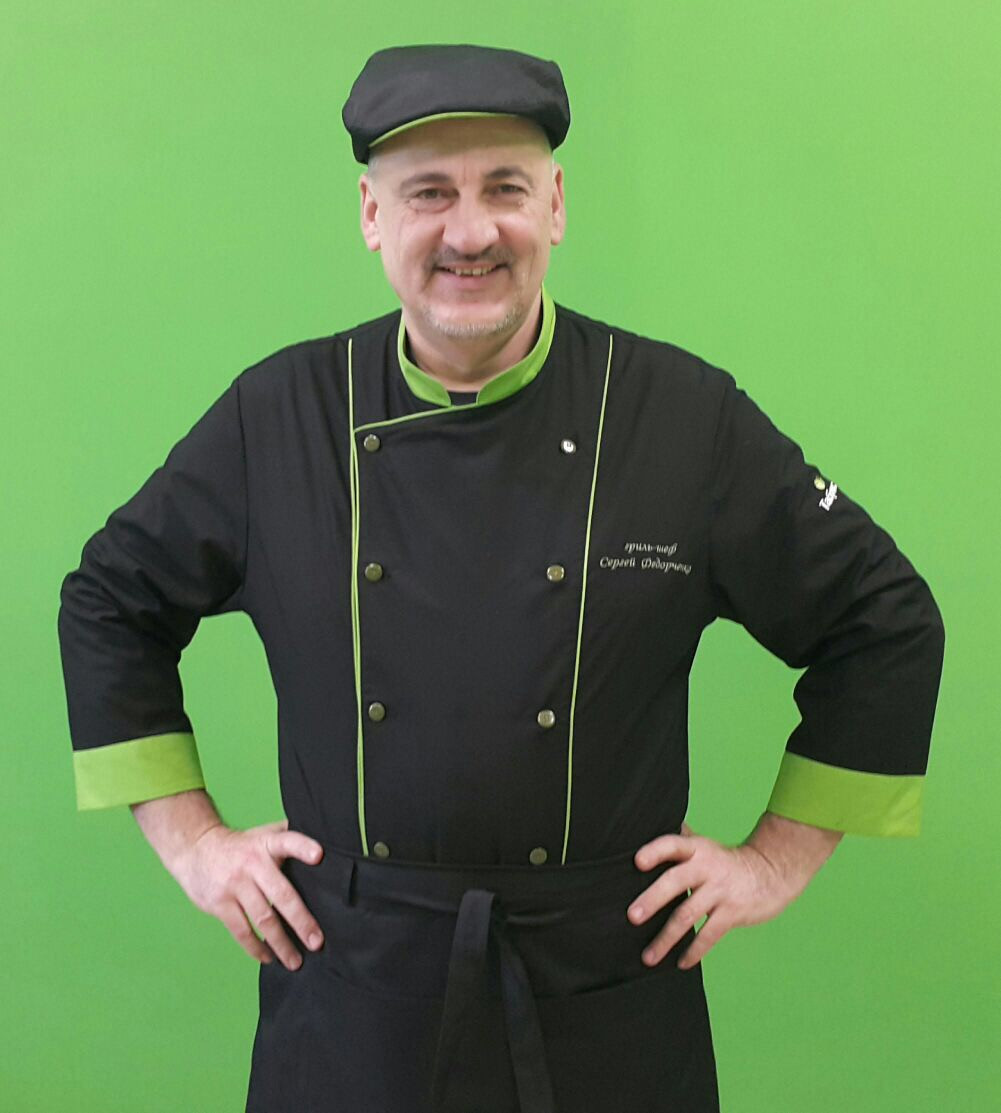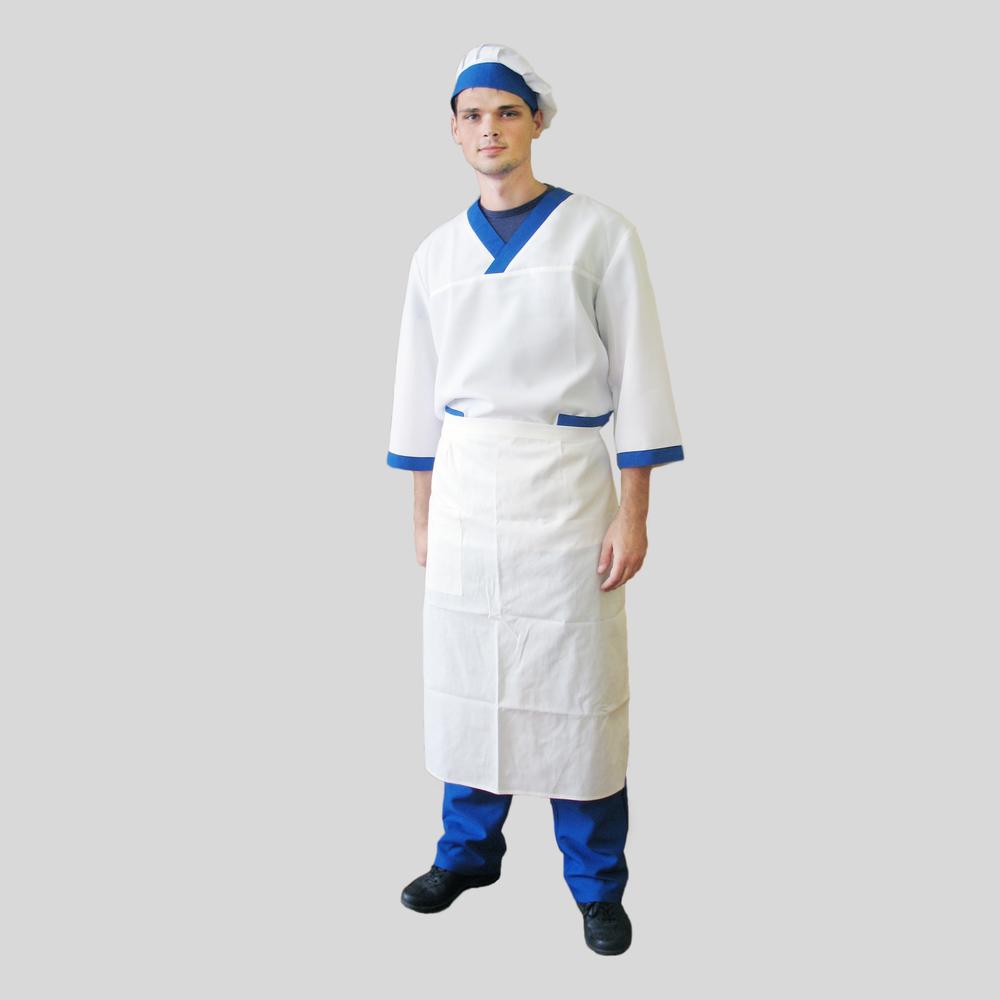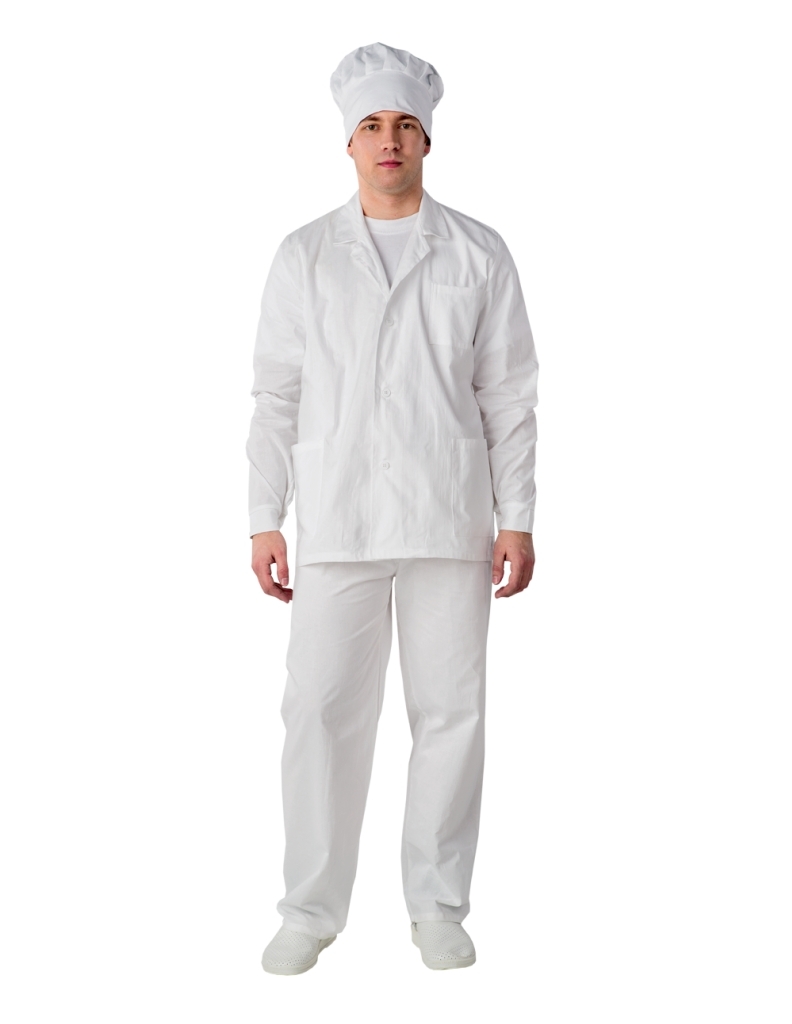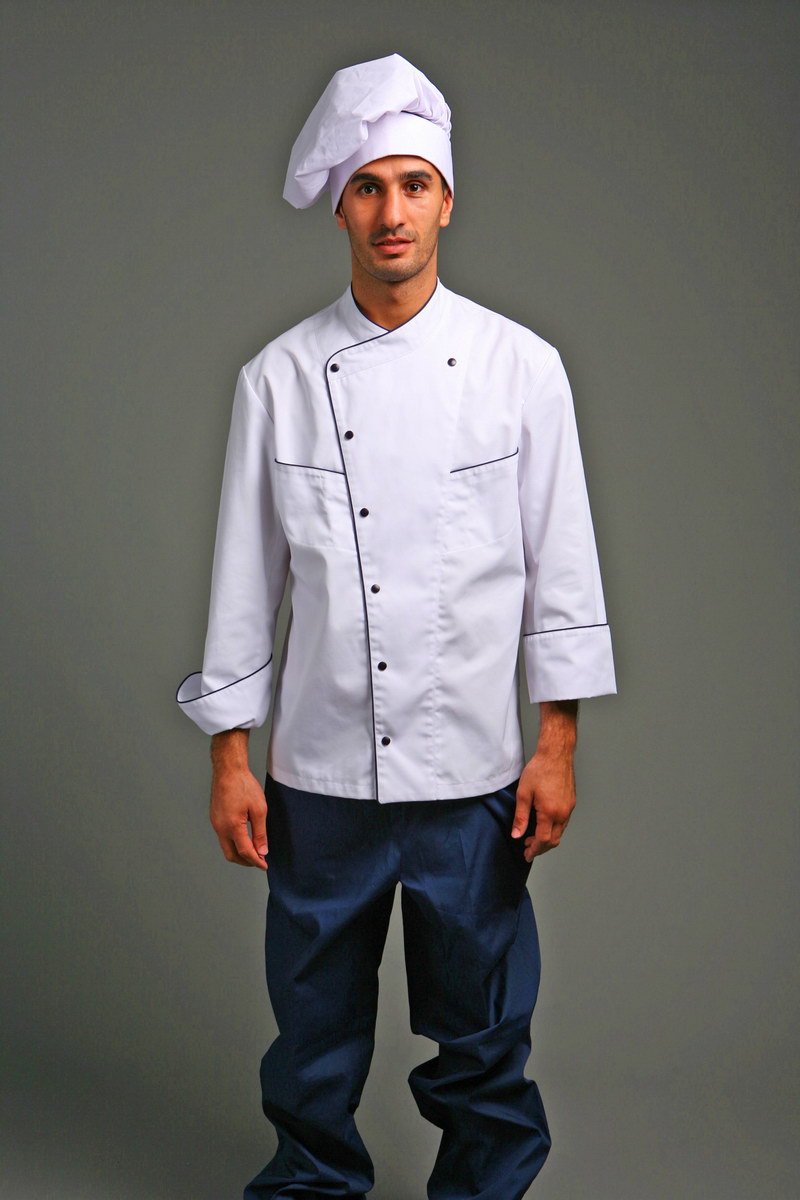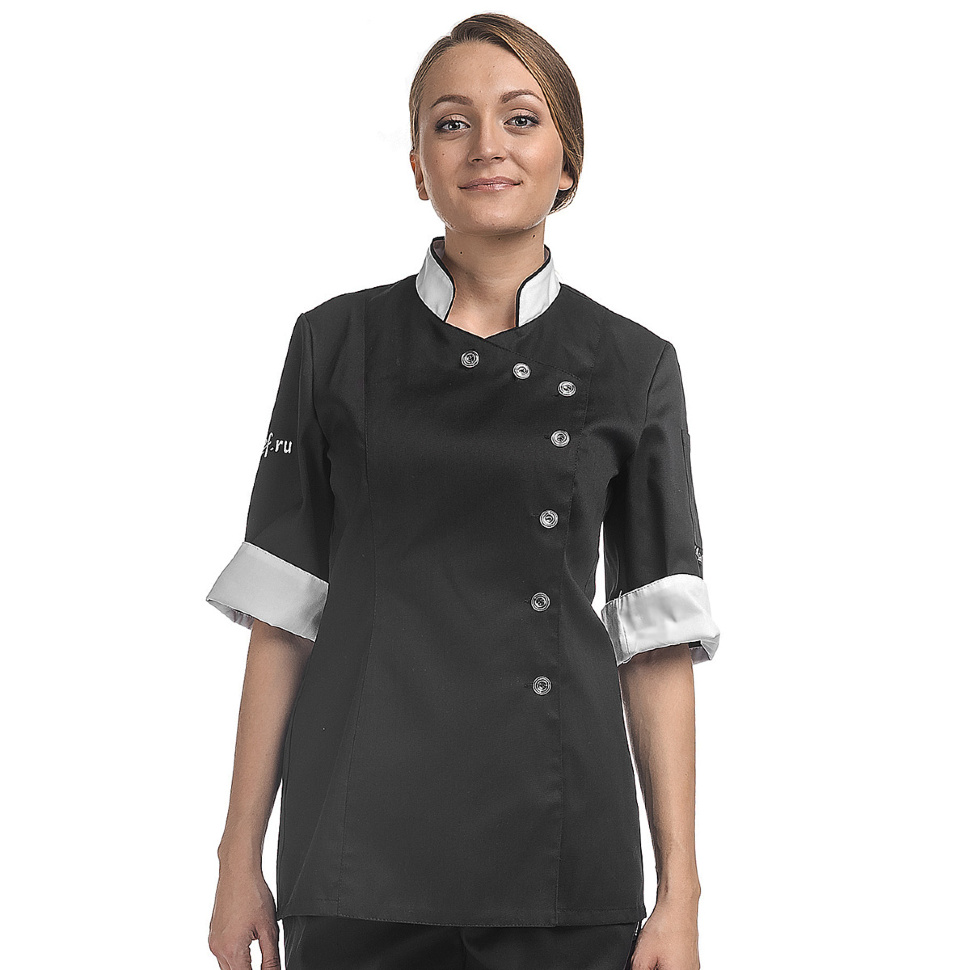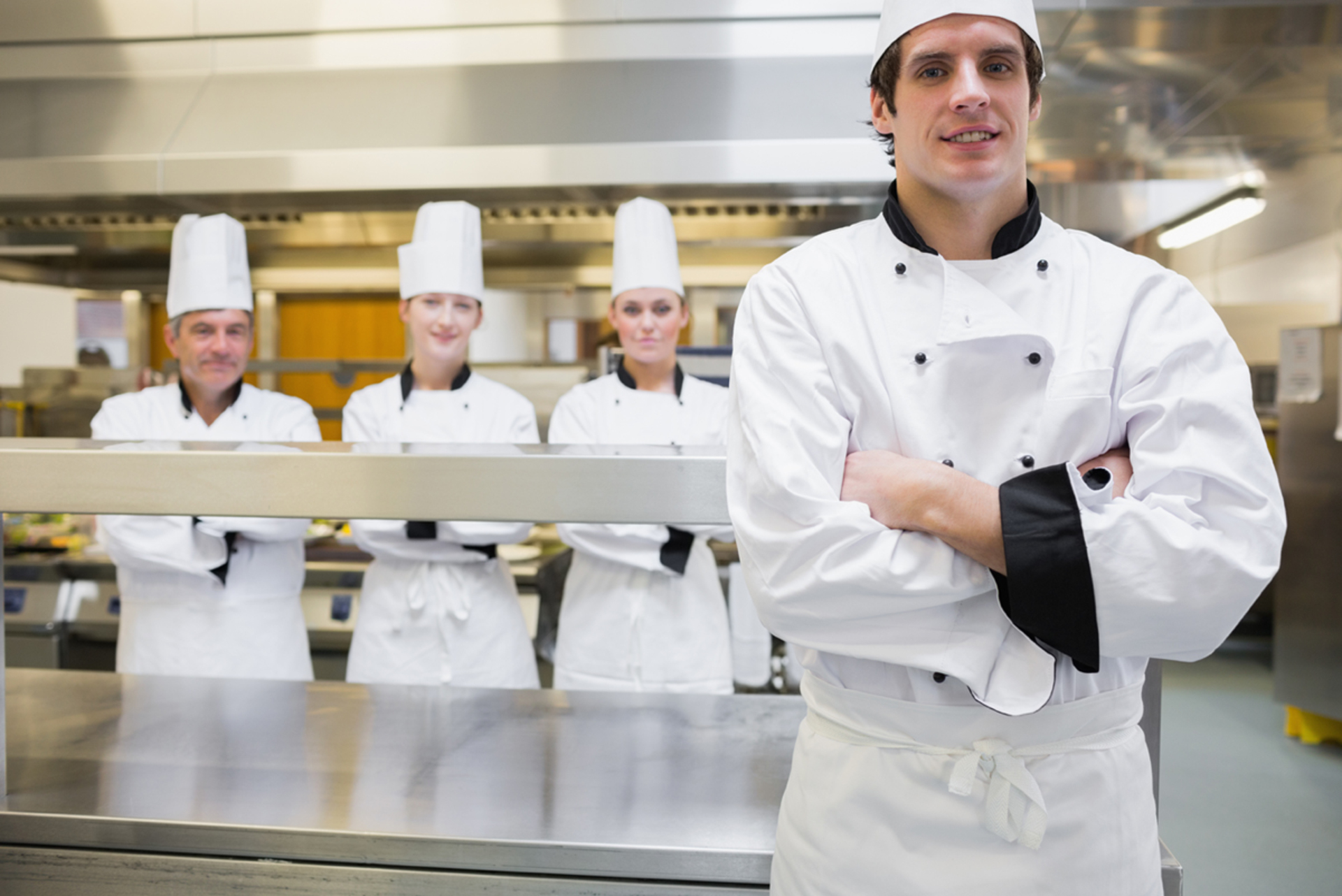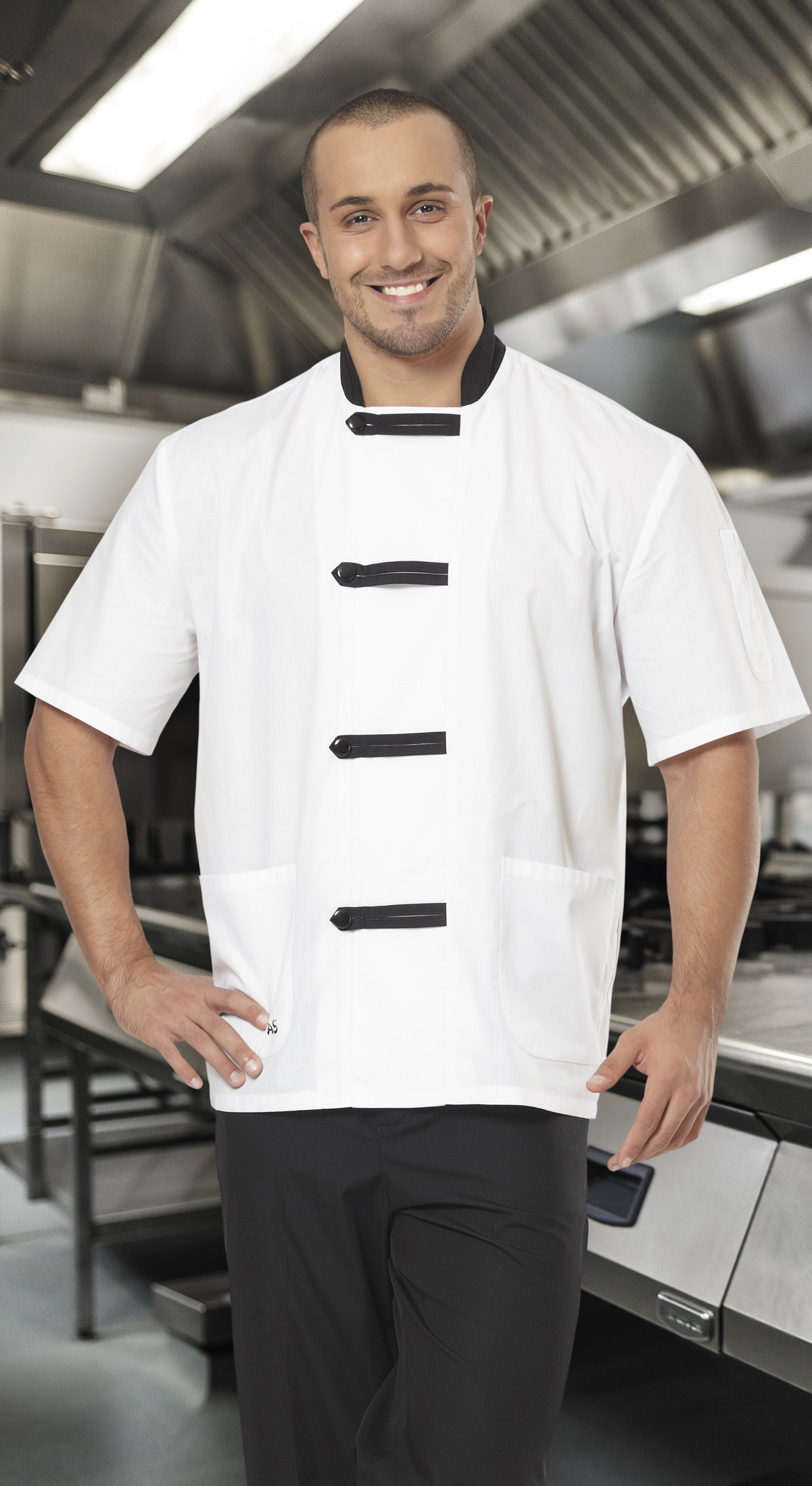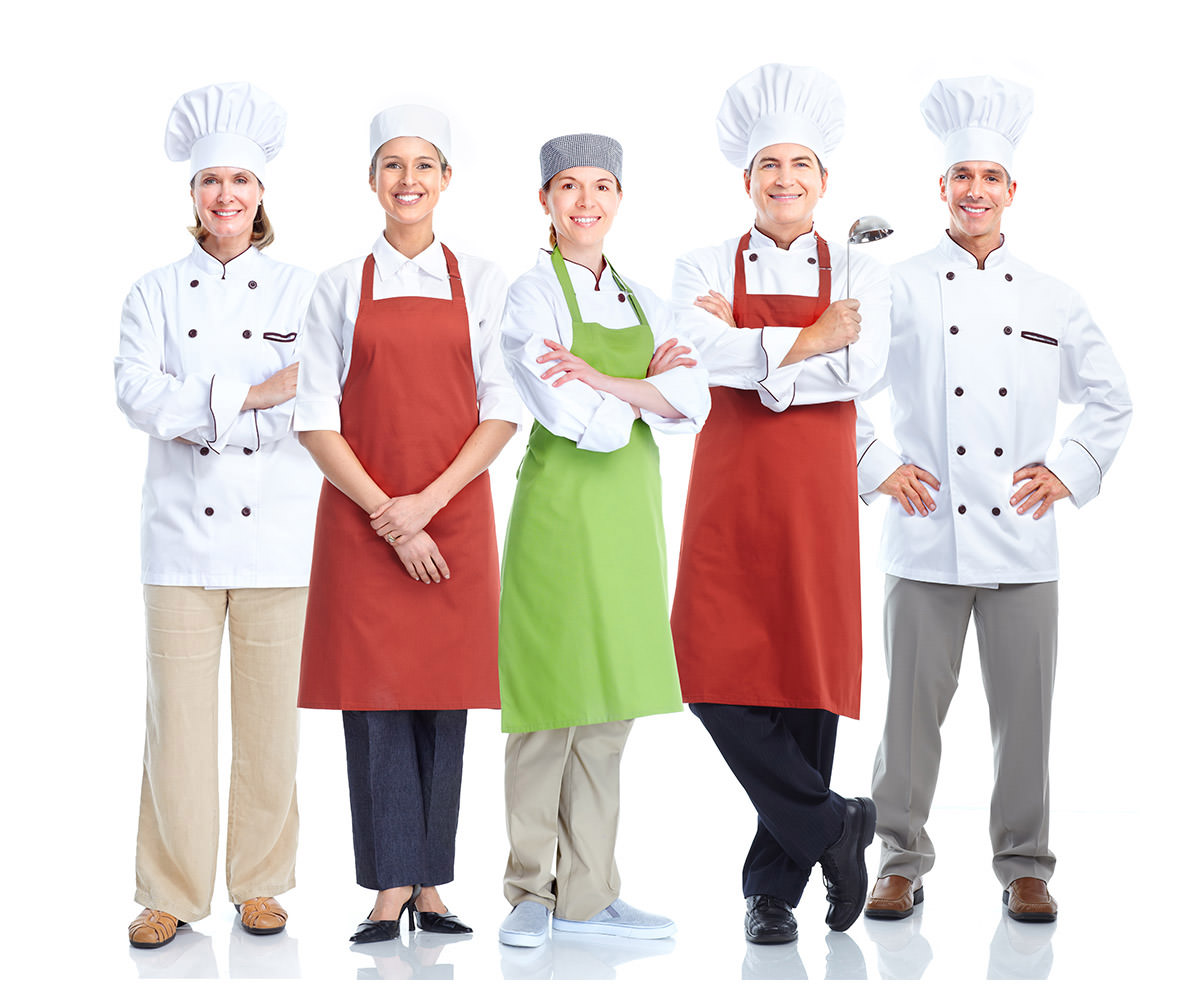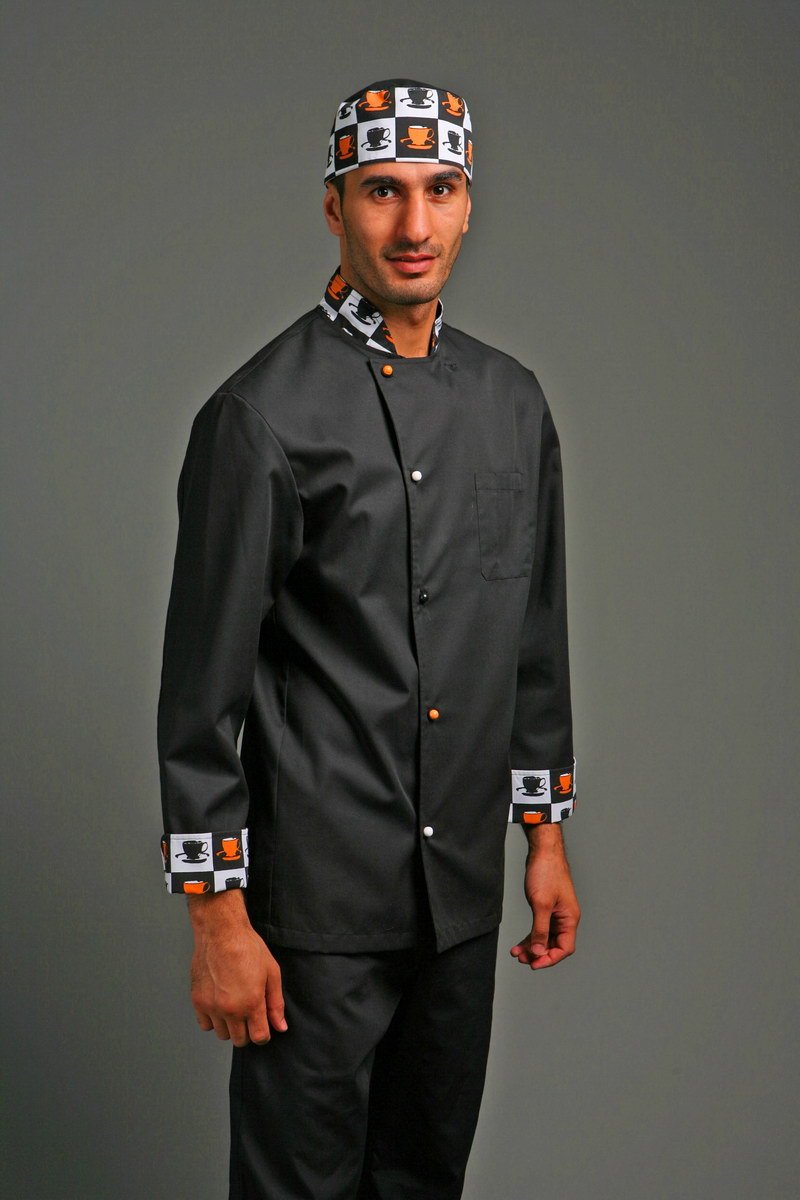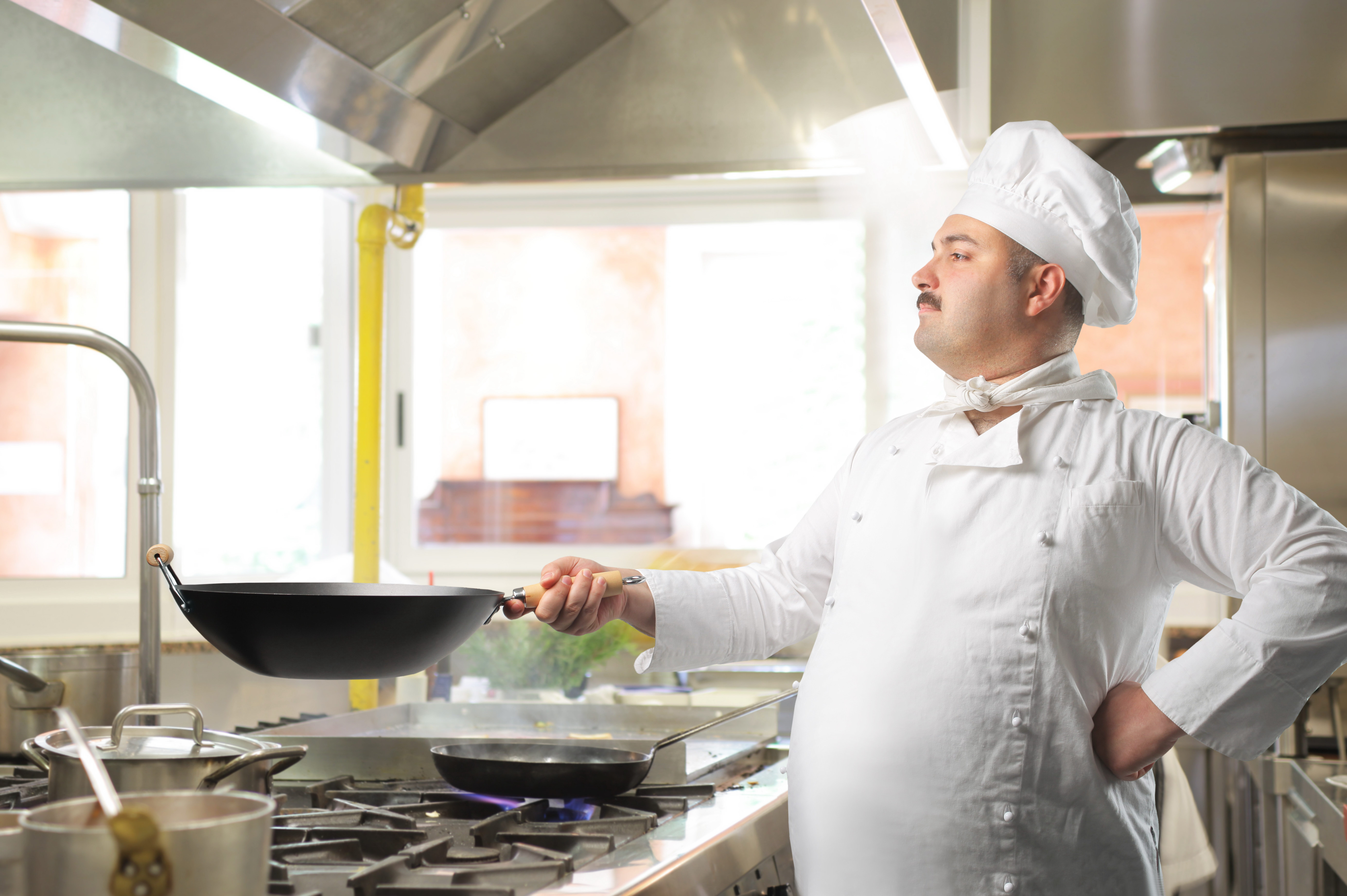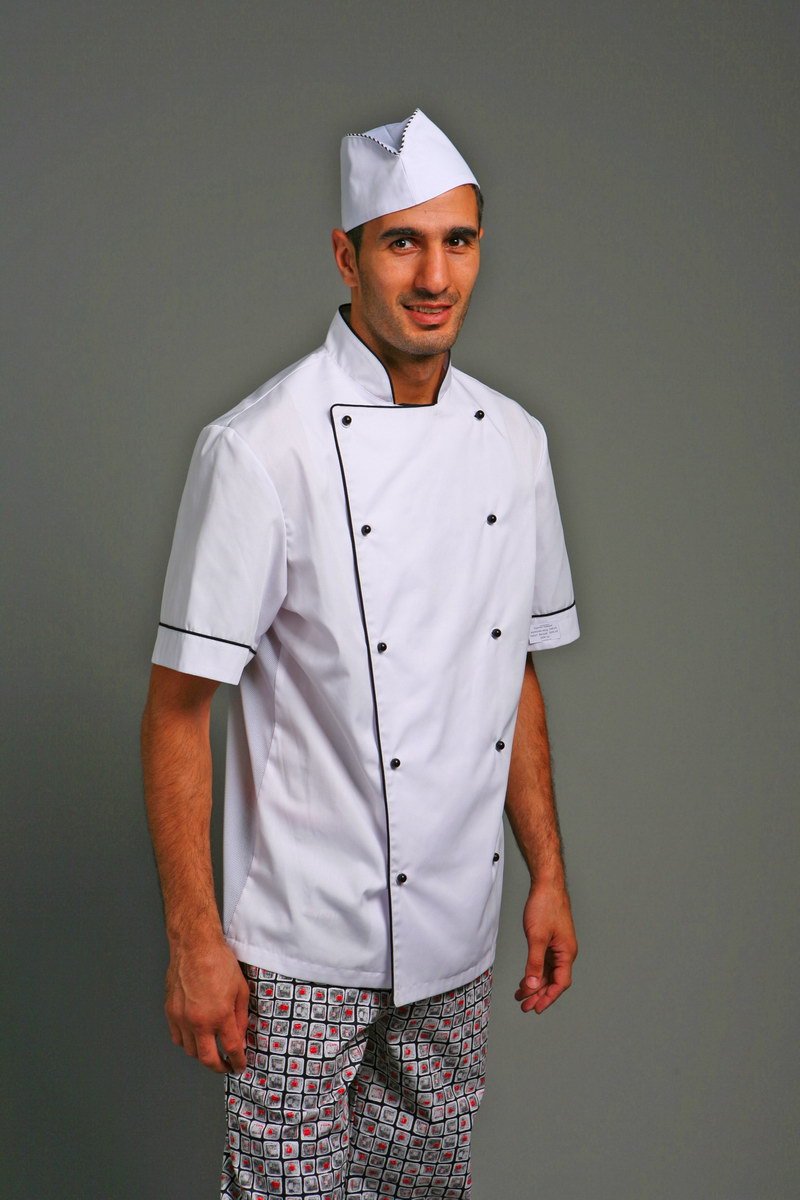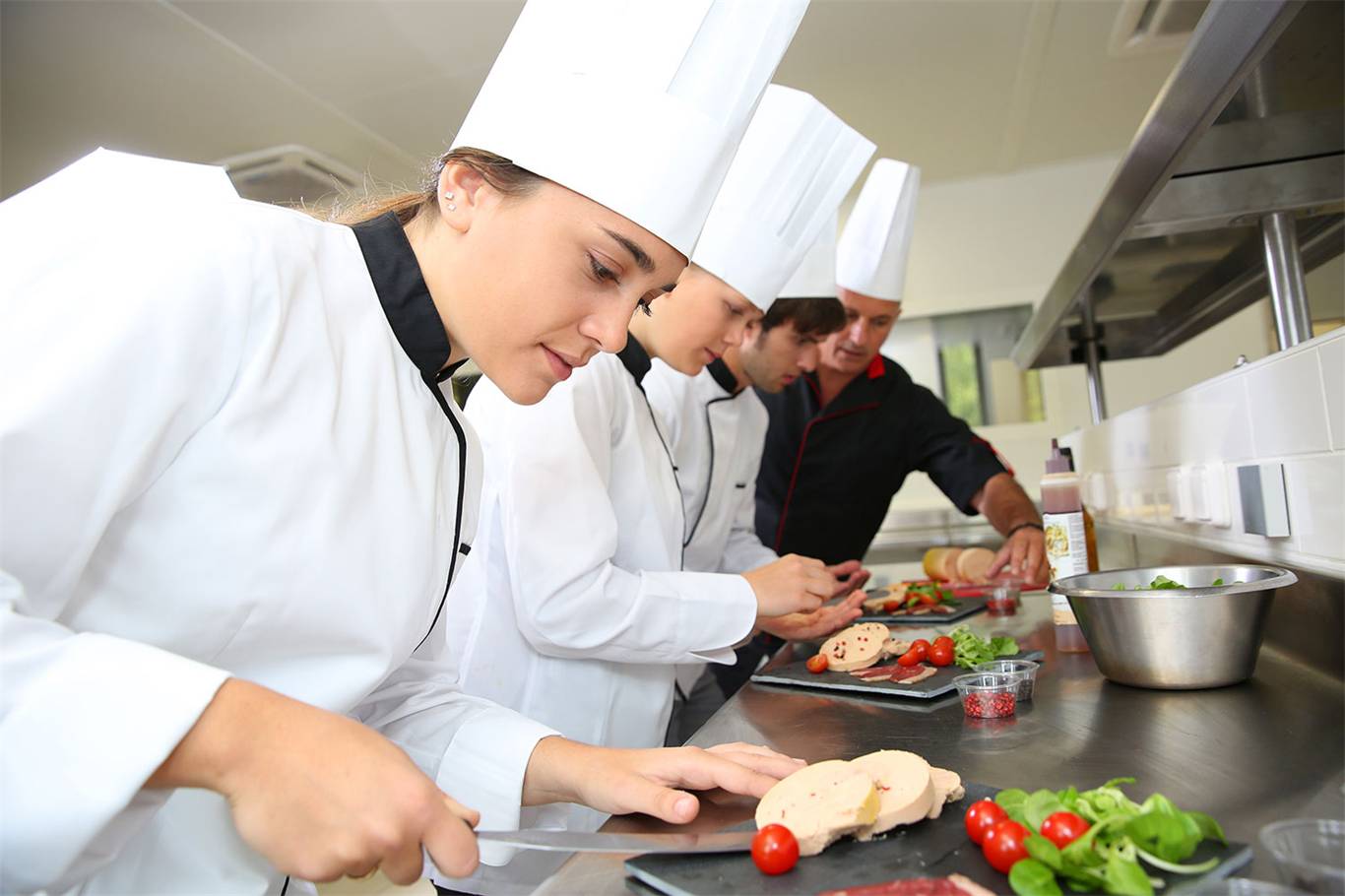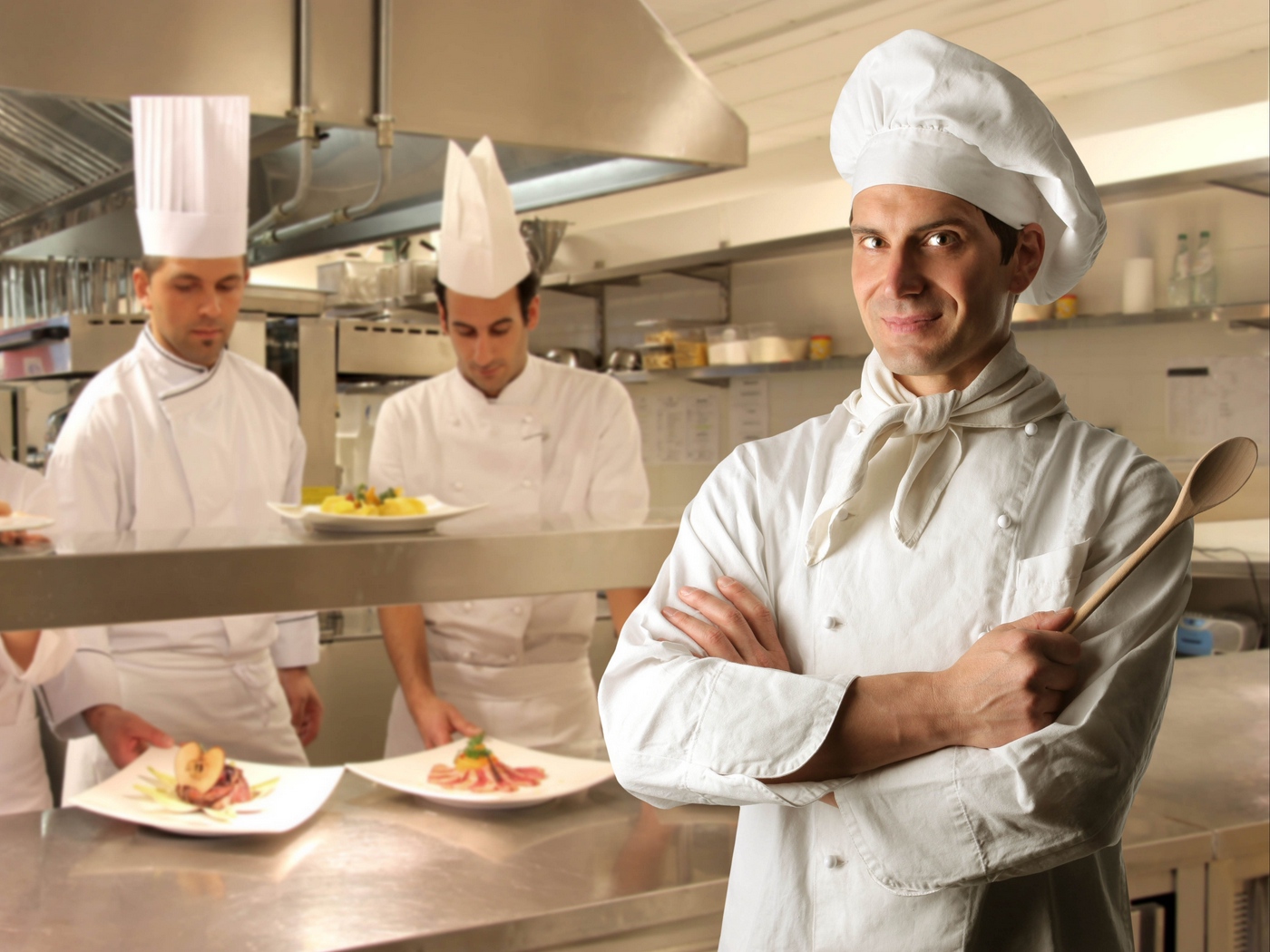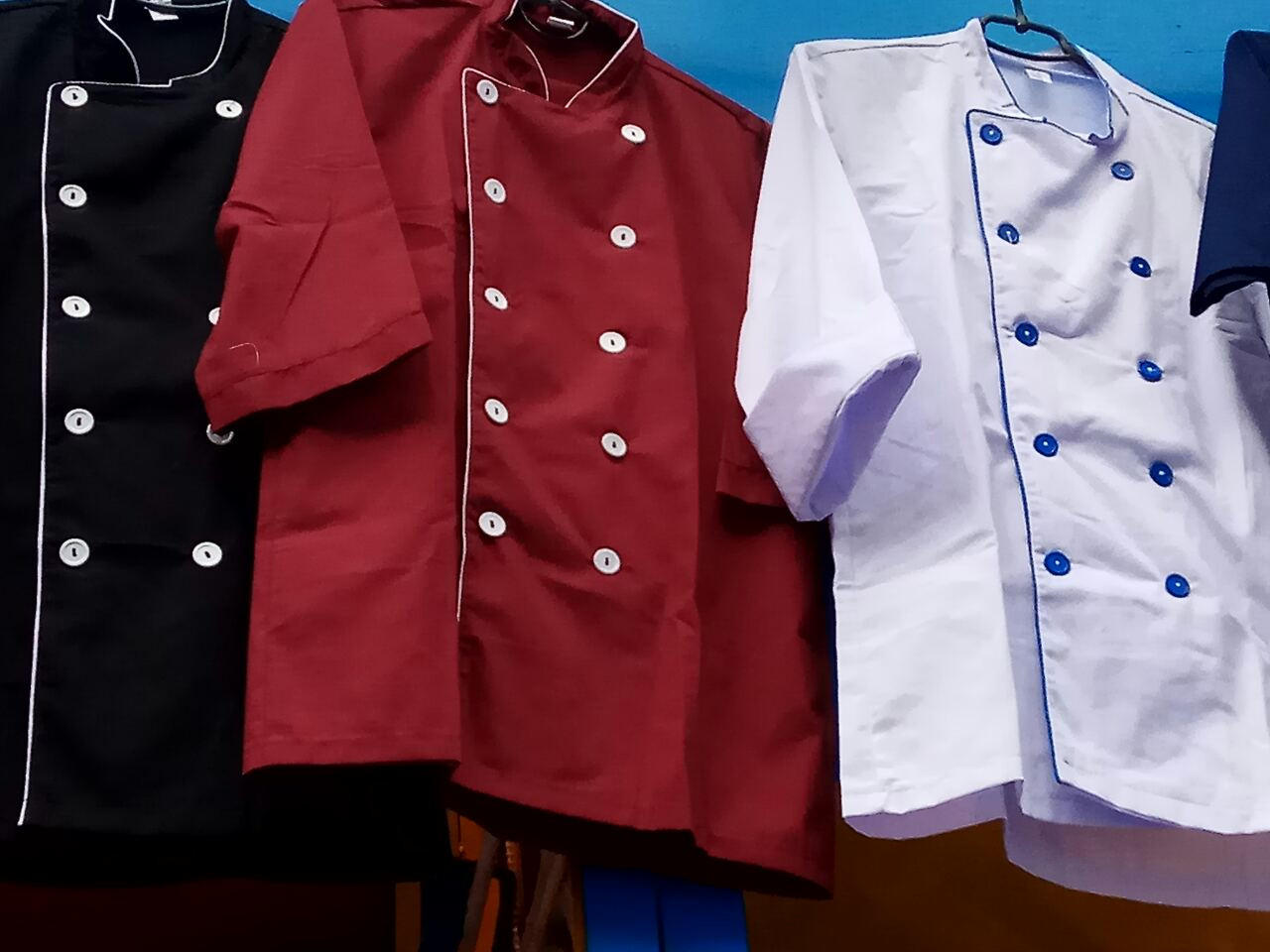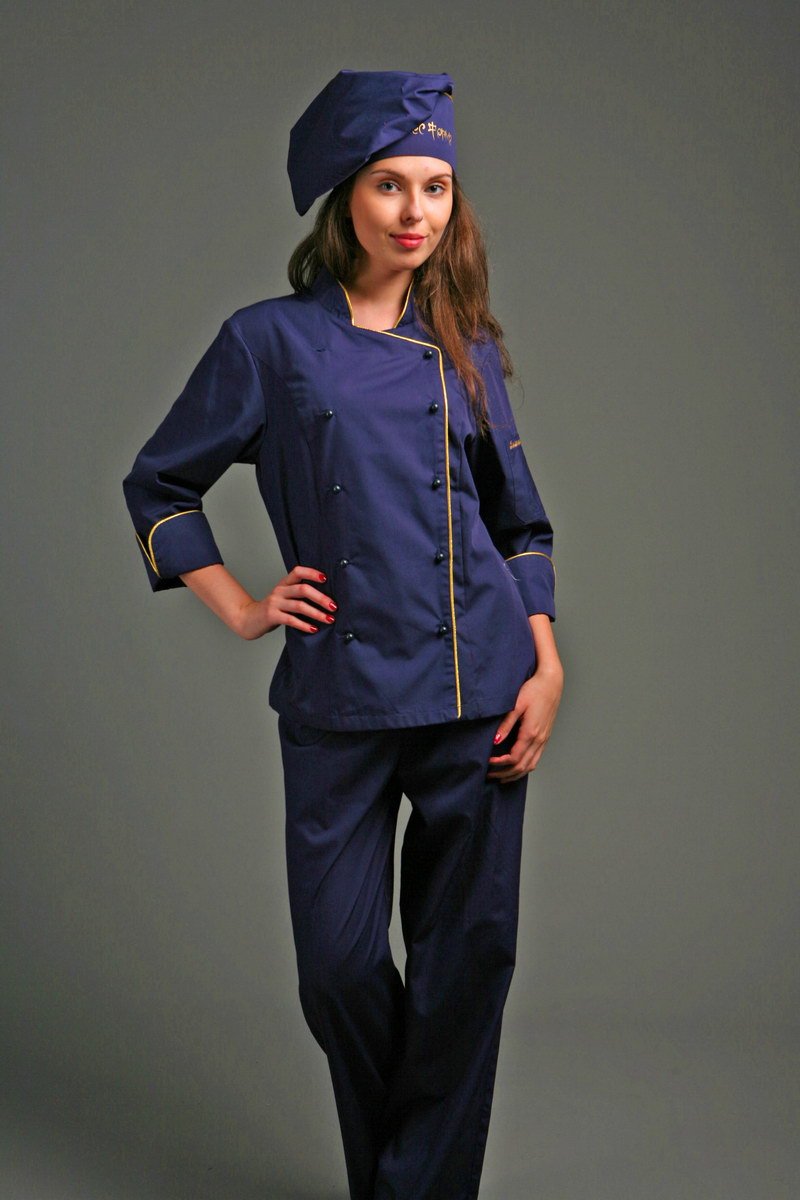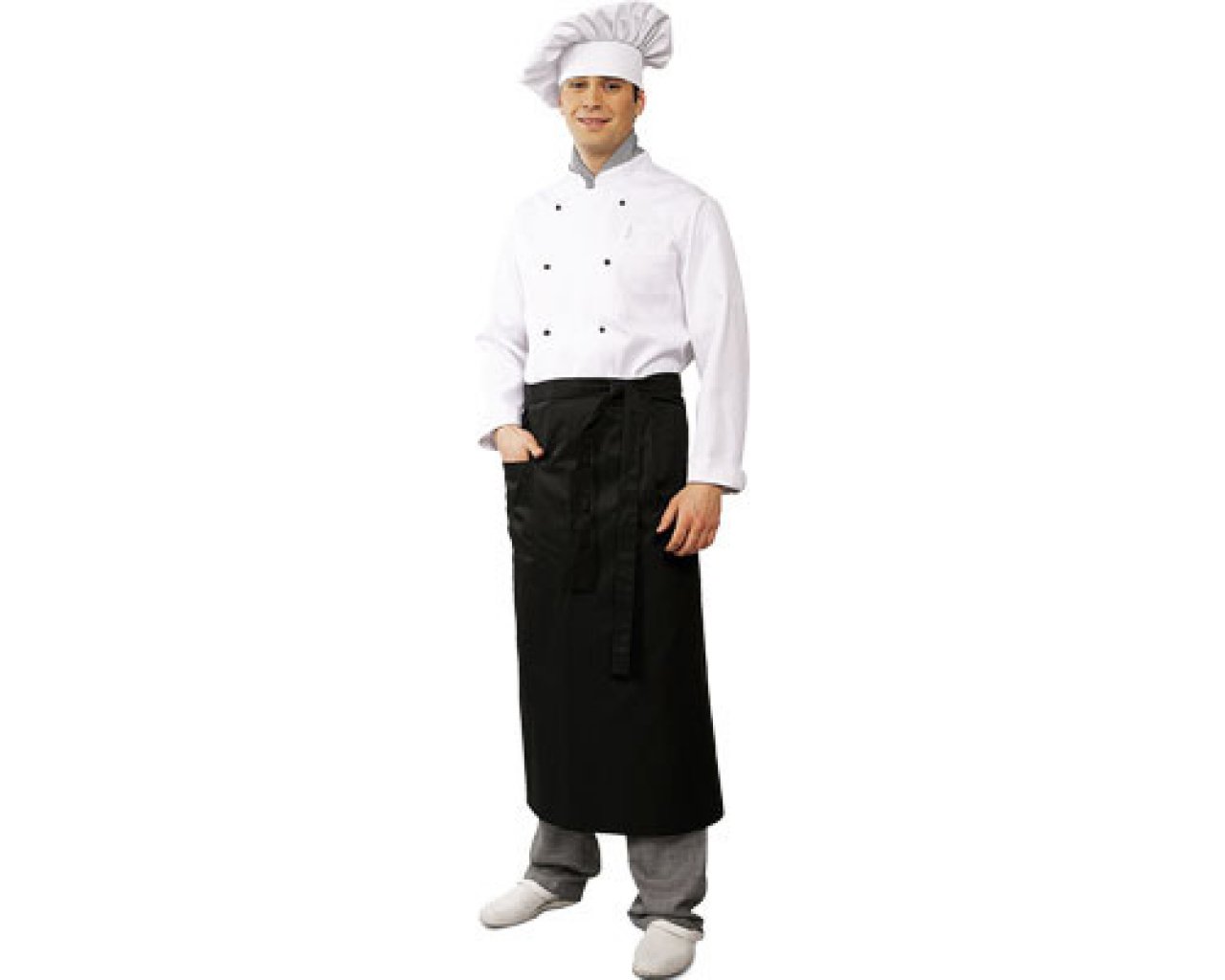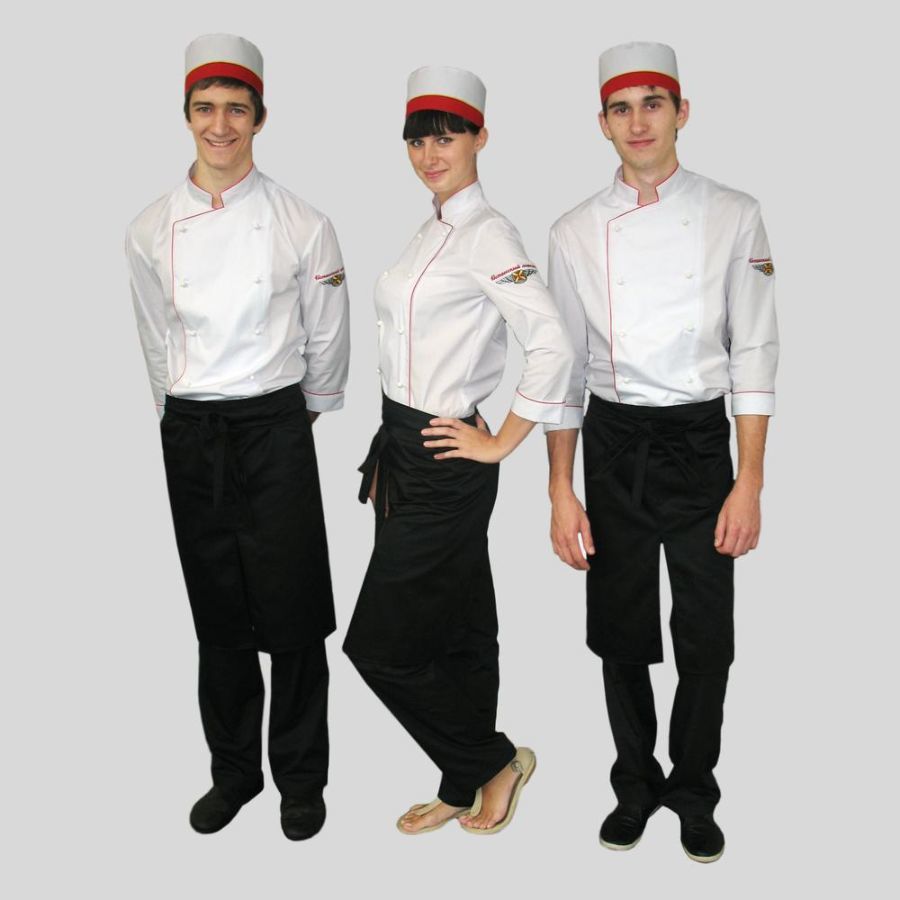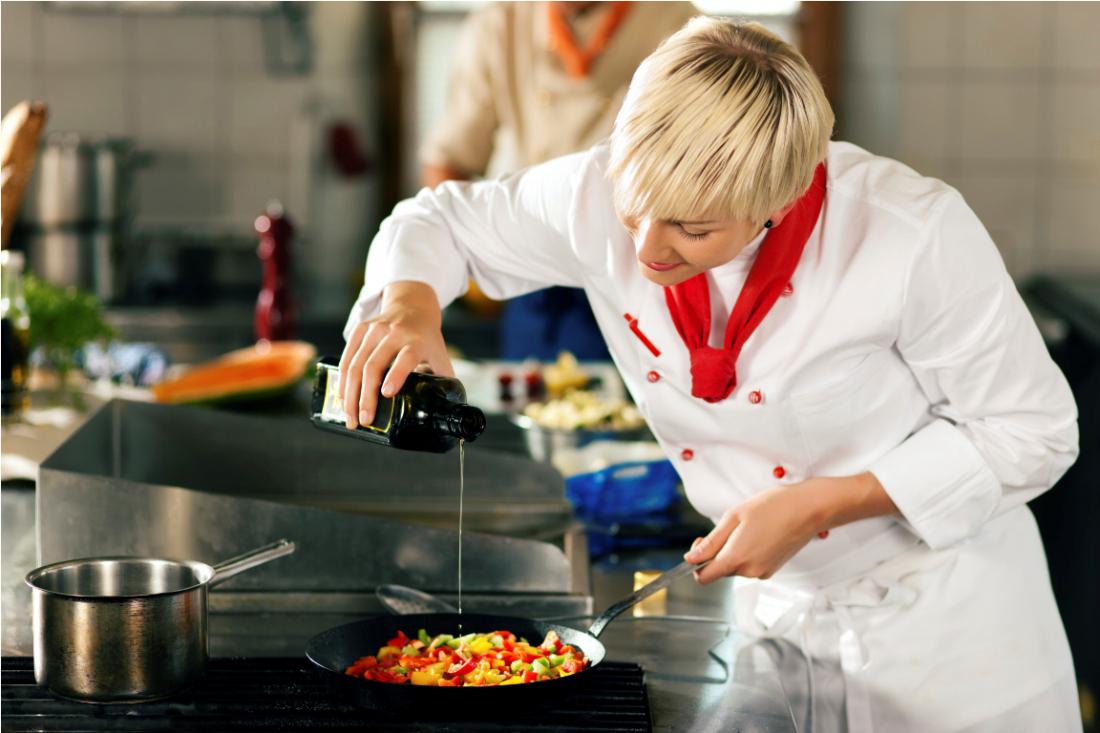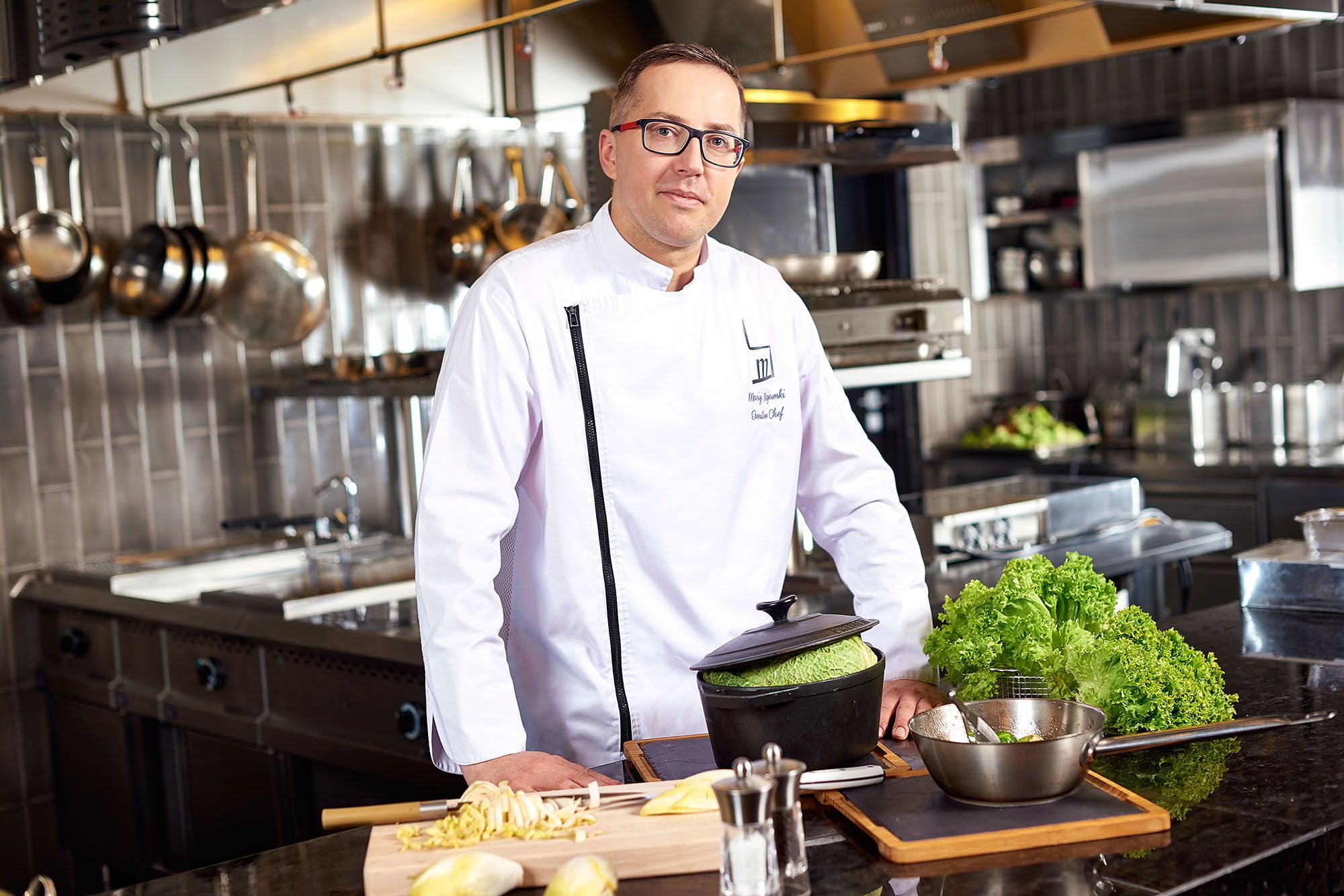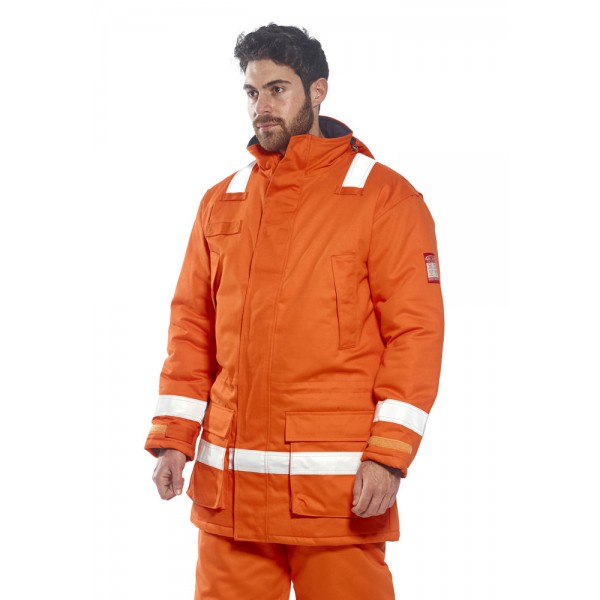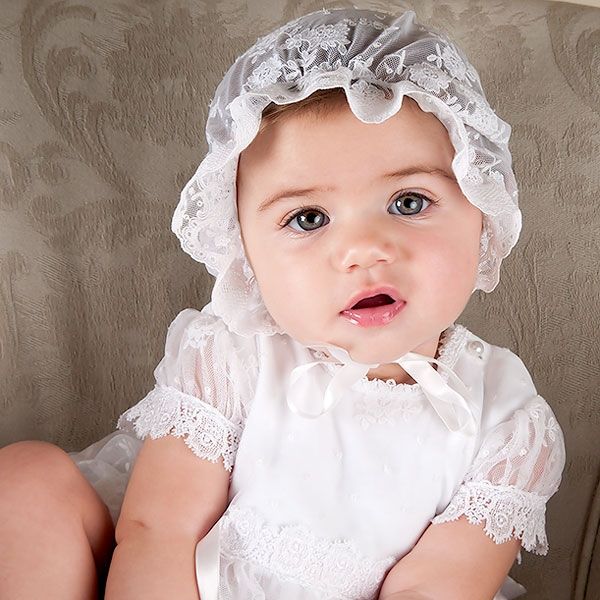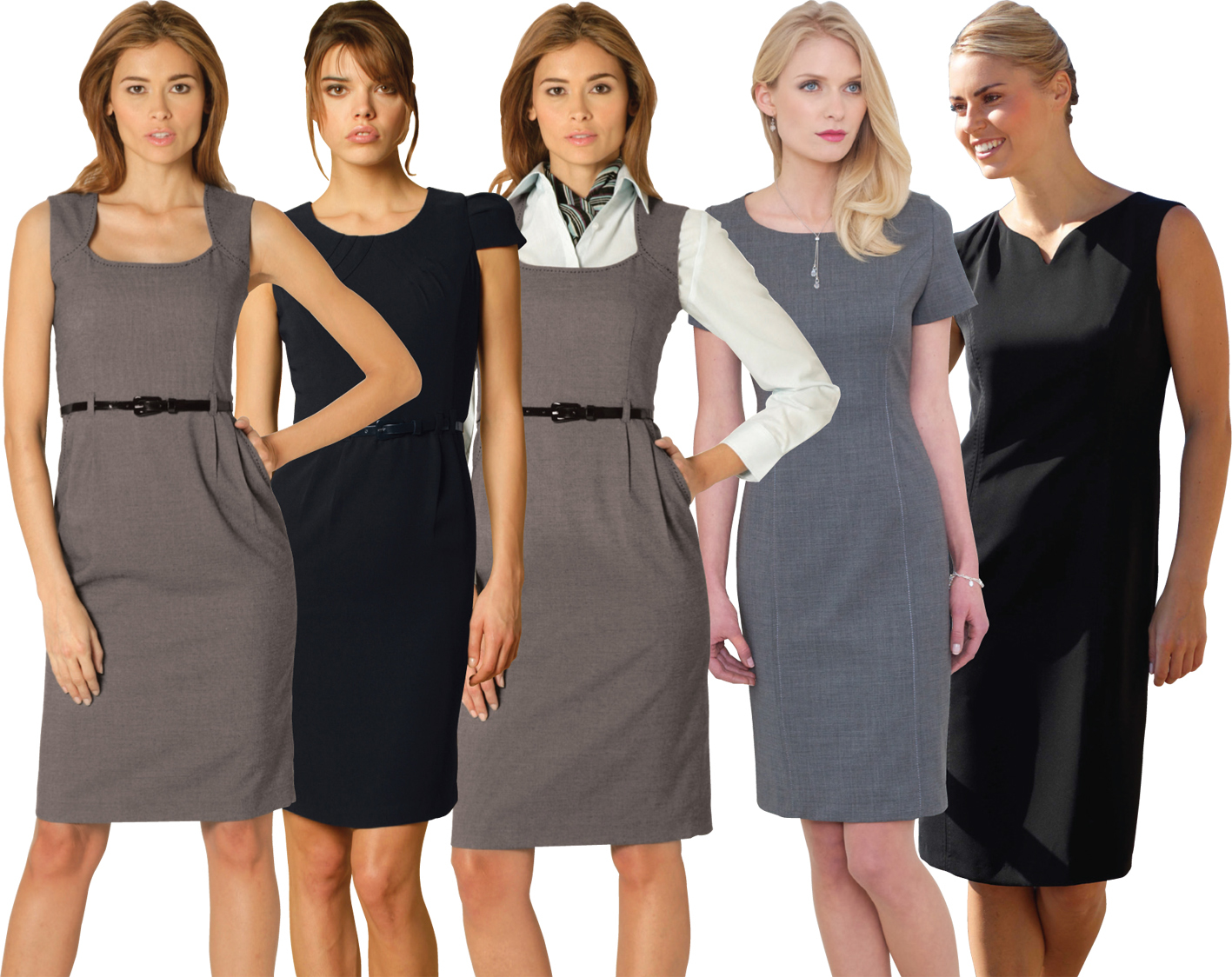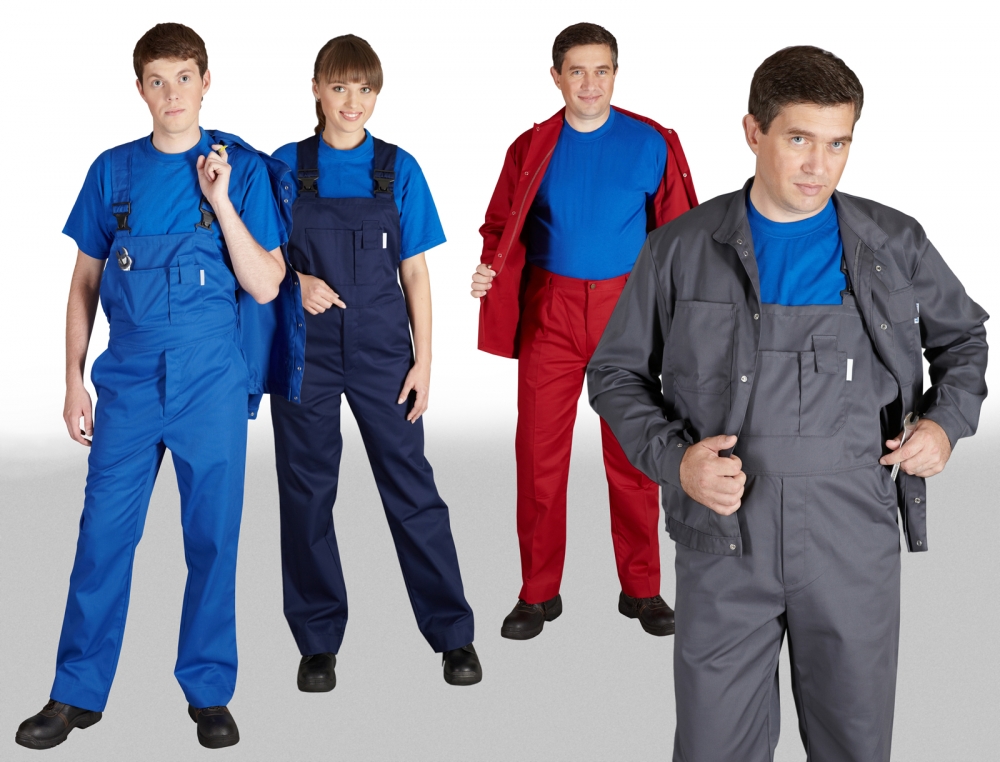The key to a chef's impeccable appearance is properly selected professional clothing that creates his image and supports the status of the establishment. A chef's uniform should have many advantages. It should look perfect so as not to raise doubts about the neatness or sterility of the establishment. In addition, clothing for chefs should be comfortable and convenient. A chef has to work in conditions of high temperature and humidity, so an important condition for the manufacture of a chef's uniform is a loose cut, as well as natural and safe materials.
Styles
The classic version of a chef's uniform is a set of trousers, a jacket or a tunic. Preference is given to free models that do not hinder the quick, precise movements of the culinary master, allowing him to move and work easily. The jacket can have long or short sleeves. Patch wide pockets are placed below the waist on a chef's jacket or a long apron, which perfectly complements the overall look and protects the main set of clothes from dirt.
When creating chef clothing models, the following points must be taken into account:
- the jacket or apron should be long, approximately reaching the knee;
- if the sleeves have a wide design, then the armband must be secured with Velcro or a button;
- Chef's clothing should not have buttons; preference is given to hidden fasteners or snaps;
- the top of the set has a high collar or stand-up collar, it is possible to use special neck scarves;
- white is an impeccable classic, but it is possible to use other colors or add bright details to the basic set, for example, a burgundy apron or a black bandana;
- To make the image brighter and maintain the style of the establishment, the chefs' clothes are decorated with the emblems of a specific restaurant, especially if the chef goes out into the dining room, personally serves some clients, or the establishment has an open kitchen.
Professional cooks wear shoes of a special style. They should have an orthopedic base, not slip, be stable and promote free air exchange. There is a special shoe called clogs. It is a professional shoe for kitchen workers. In such shoes, feet get tired less, do not swell after a long shift in the kitchen.
Quality of material
Chef's uniform should be washed daily, so special requirements are imposed on the material of manufacture. The uniform should not lose its appearance from frequent washing. Synthetic materials are highly resistant to external influences, but have increased electrostaticity and low hygroscopicity. Cotton fabrics have excellent heat exchange properties, they are pleasant to the body, comfortable to wear, but quickly wrinkle and lose their appearance from frequent washing.
The best option would be to use modern mixed materials that combine the best properties of natural and synthetic fabrics. Such materials are durable, they are resistant to external adverse factors, thanks to a special impregnation that protects against water and oil. Poplin or twill can be used as materials for sewing chef's uniforms.
The cook's sanitary clothing includes a complete set: cap, jacket, trousers, towel, apron. All items must be made of safe materials that allow working with food products. In addition, the material must have protective properties, protecting the cook from heat exposure, excess moisture and steam.
An important point is high-quality clog footwear, which is the key to protection from increased loads. An attractive appearance, hygiene of products, and a high-quality orthopedic base made of non-slip material are important.
Headwear
Headwear is a mandatory component of a professional chef's clothing set. This is the most diverse part of a classic chef's suit in terms of style and execution. It can be a traditional snow-white cap, a neat hat, a stylish bandana, an original beret or just a visor. Everything depends on the image of the establishment, working conditions and the type of activity of the culinary worker.
The headgear protects the chef from heat stroke and also ensures safety during the cooking process. The white high cap has many design options, but always adds significance to the image of the chef, emphasizing the neatness and care for the impeccability of the prepared dishes.
Colors
The snow-white uniform for chefs is a traditional option that is difficult to compete with. White symbolizes cleanliness and neatness. Such clothing is designed to instill confidence in the impeccable implementation of sanitary standards. In addition, any bright accent or emblem will stand out perfectly against a white background, emphasizing the corporate status of the establishment.
Delicate pastel colors can be a good alternative to the traditional white color, they can be in harmony with the overall color scheme of the establishment, attract with the unusual style, and originality of the color scheme.
A popular combination is white and burgundy. A snow-white set with a dark burgundy apron, white trousers and a cap with a burgundy jacket, a snow-white towel on a dark sleeve. Such sets look stylish, benefiting from the play of contrasts, making the chef's figure significant.
Video

